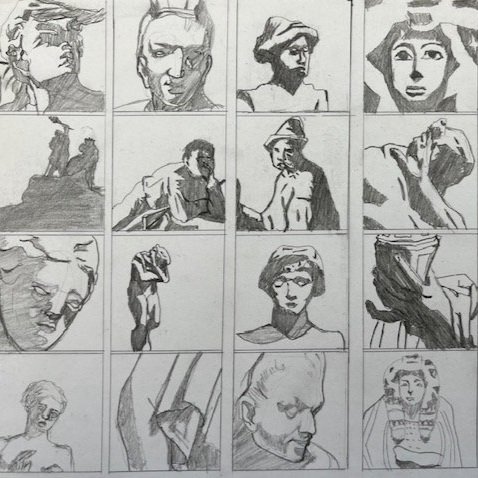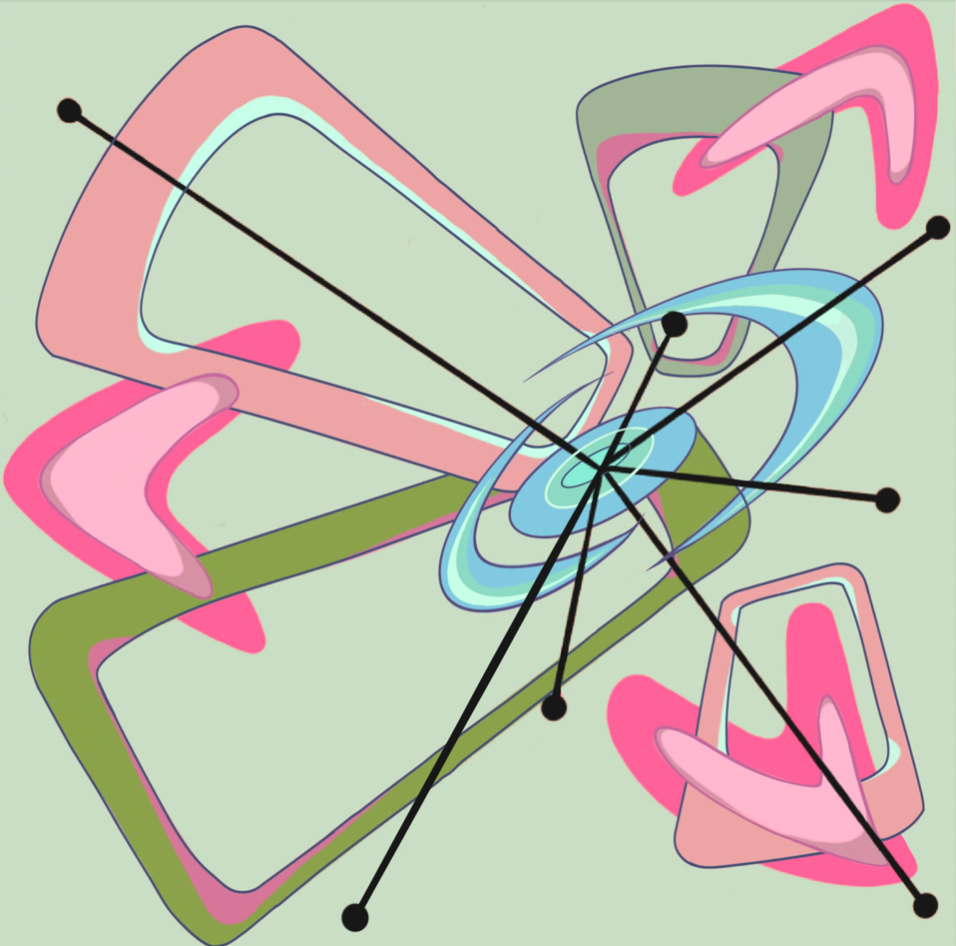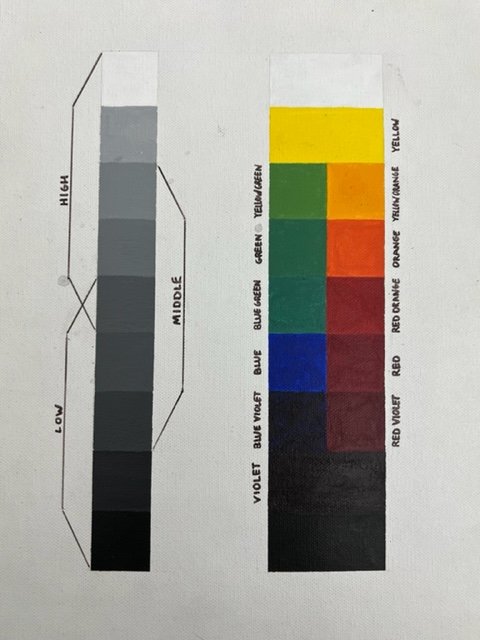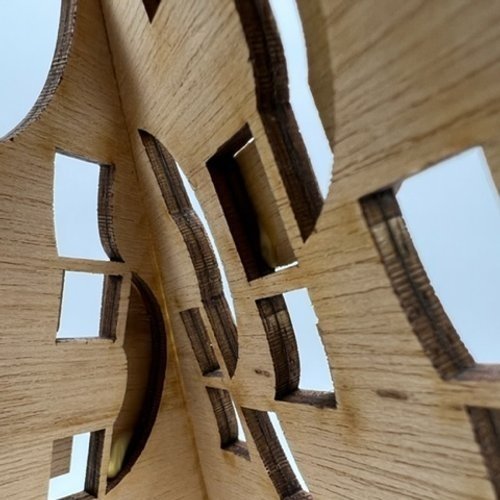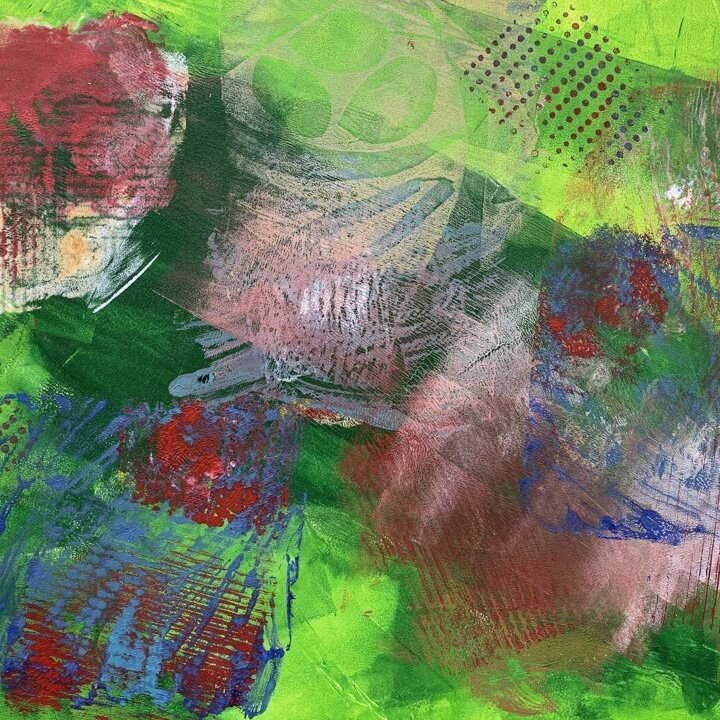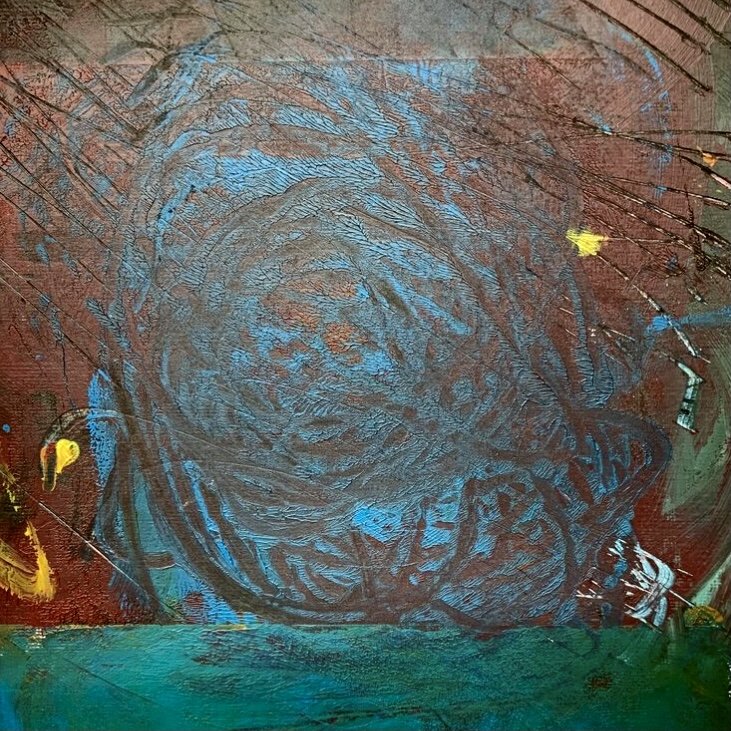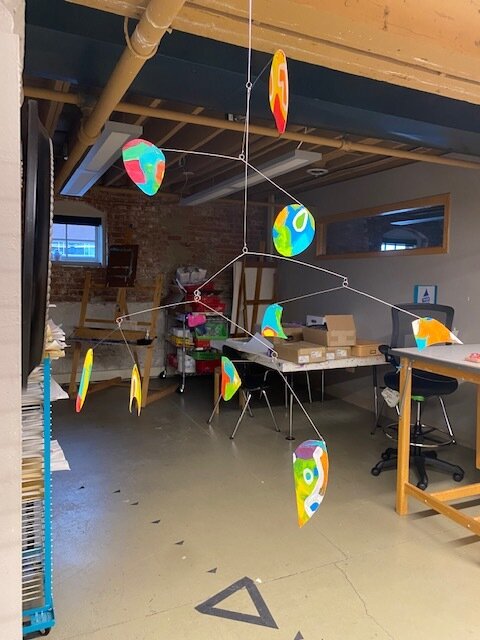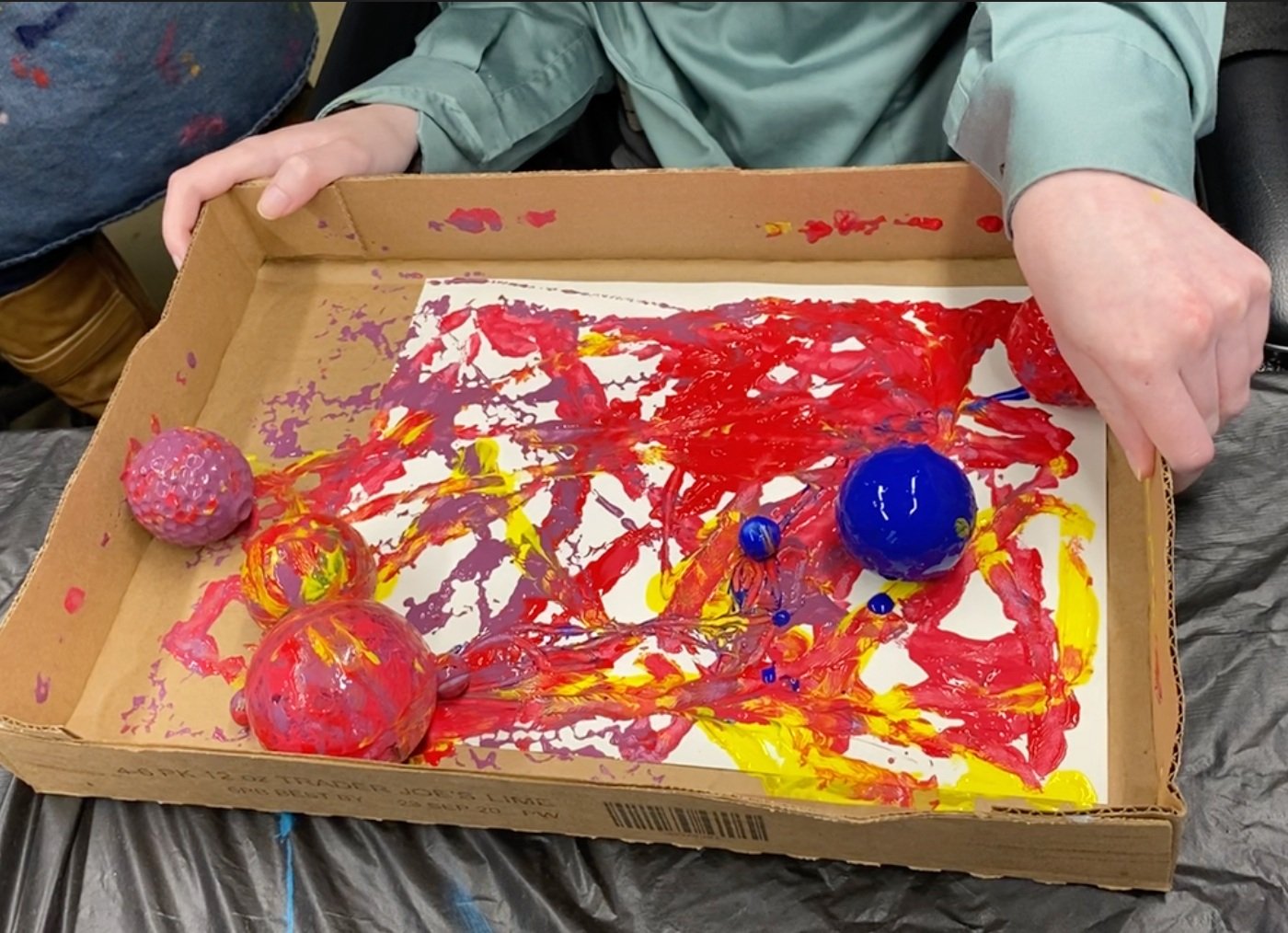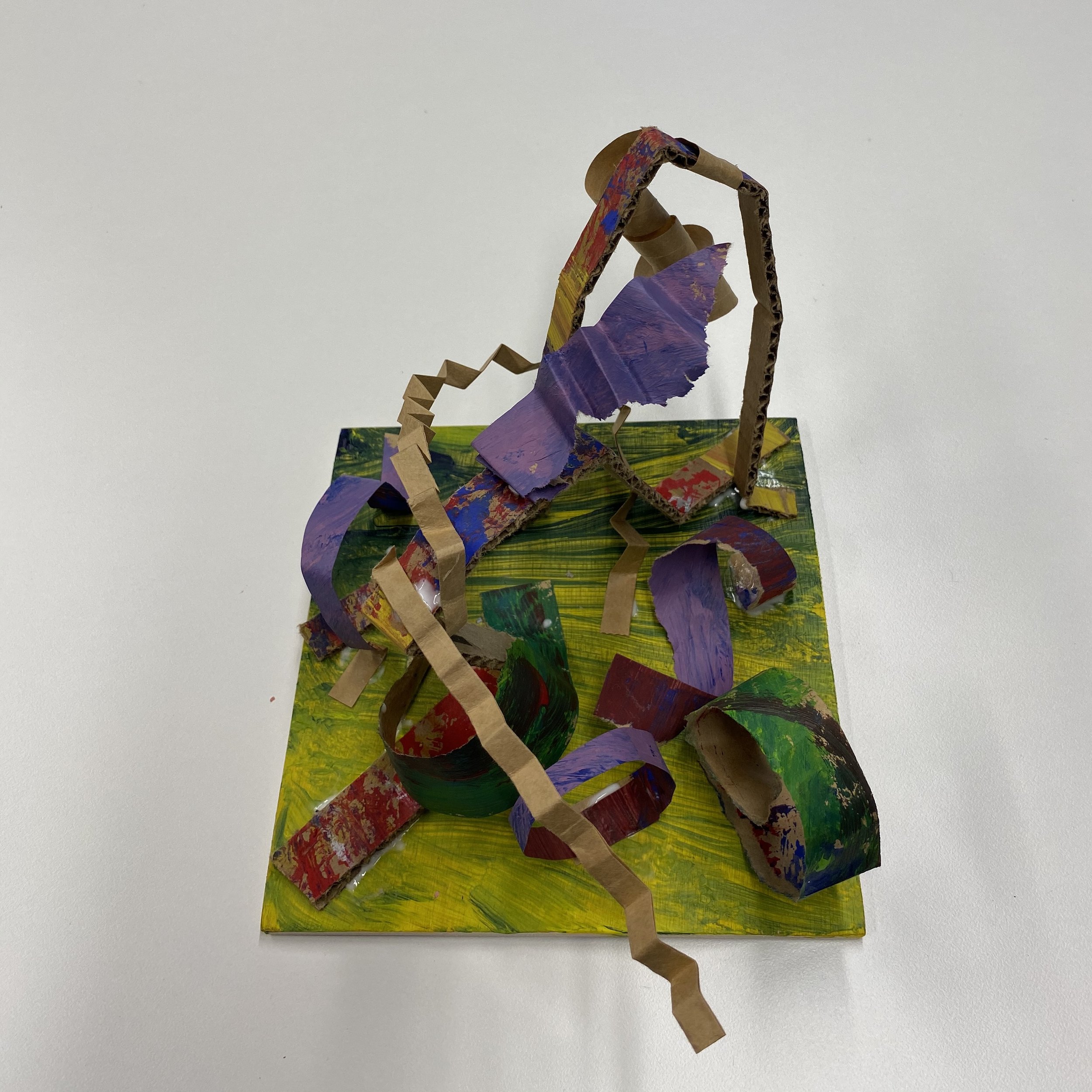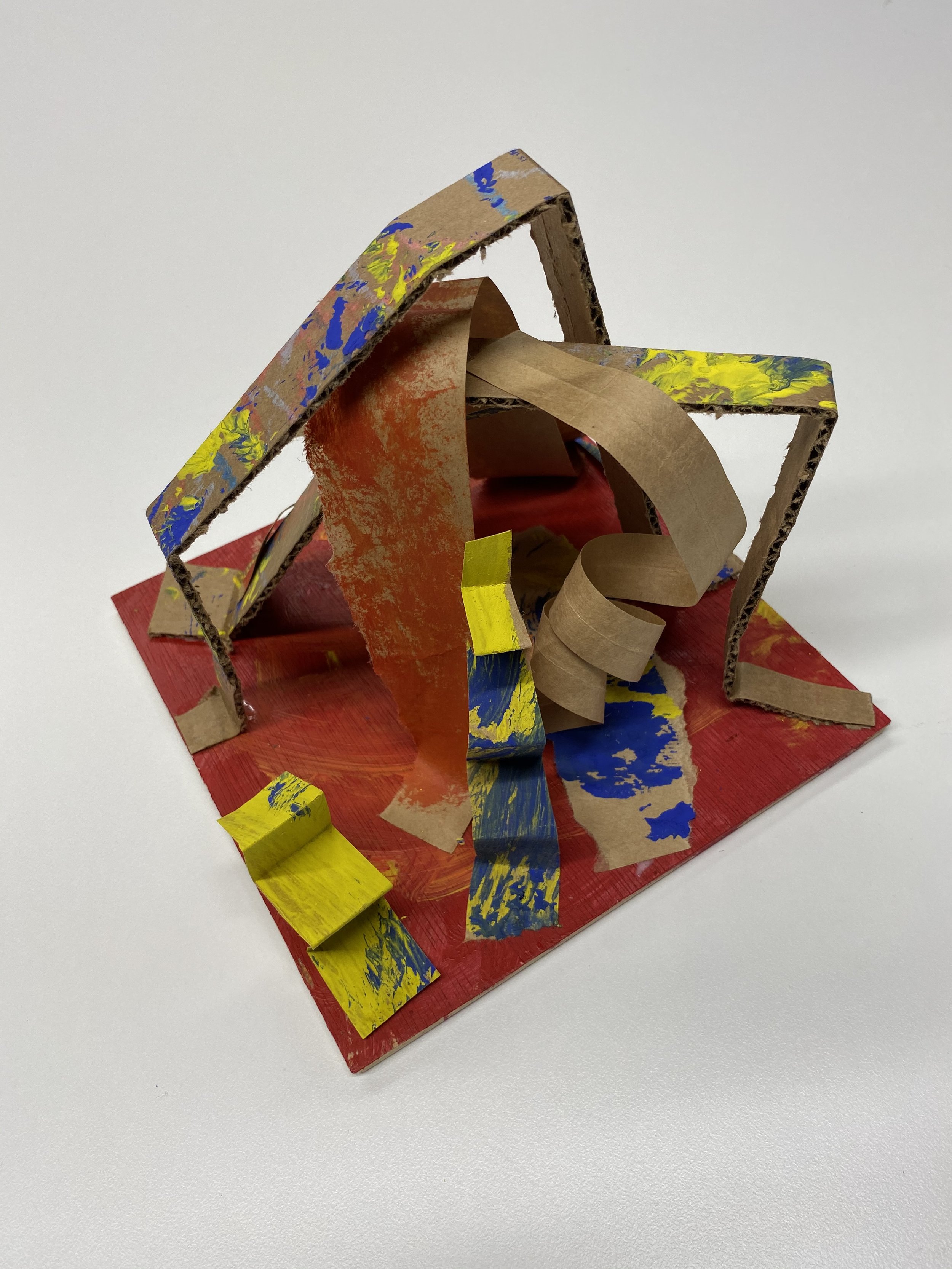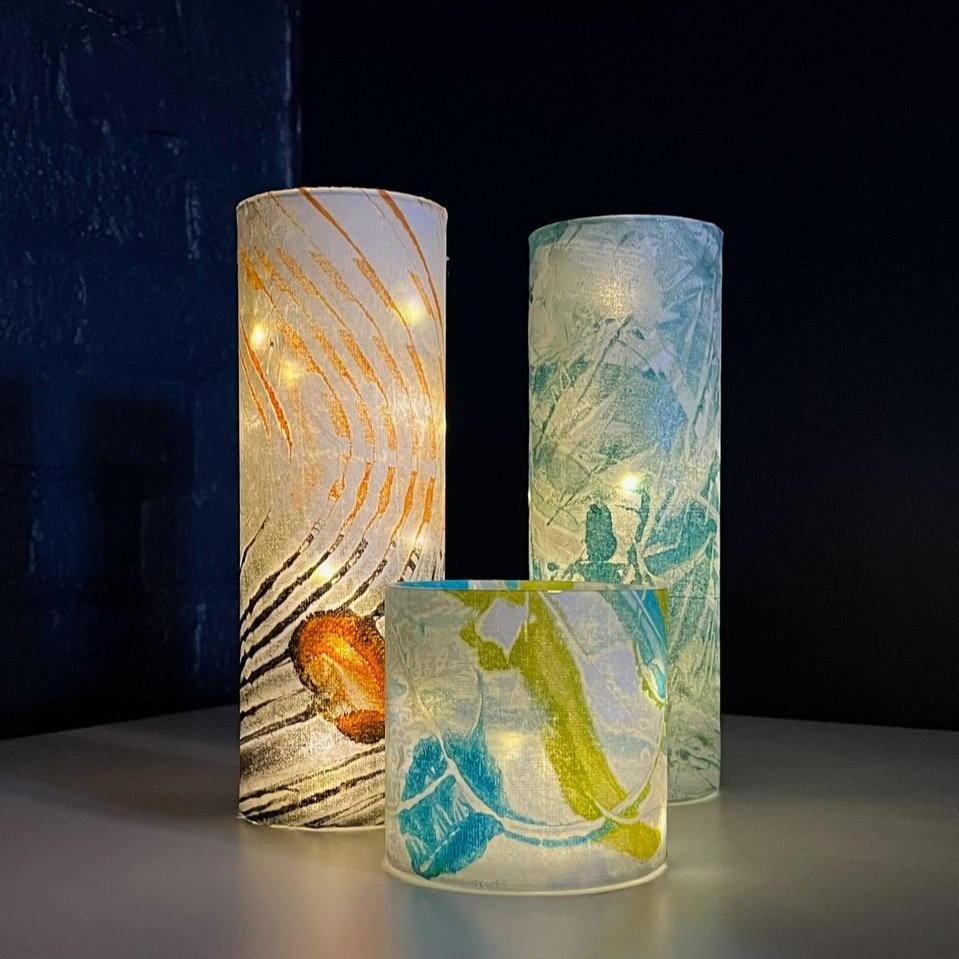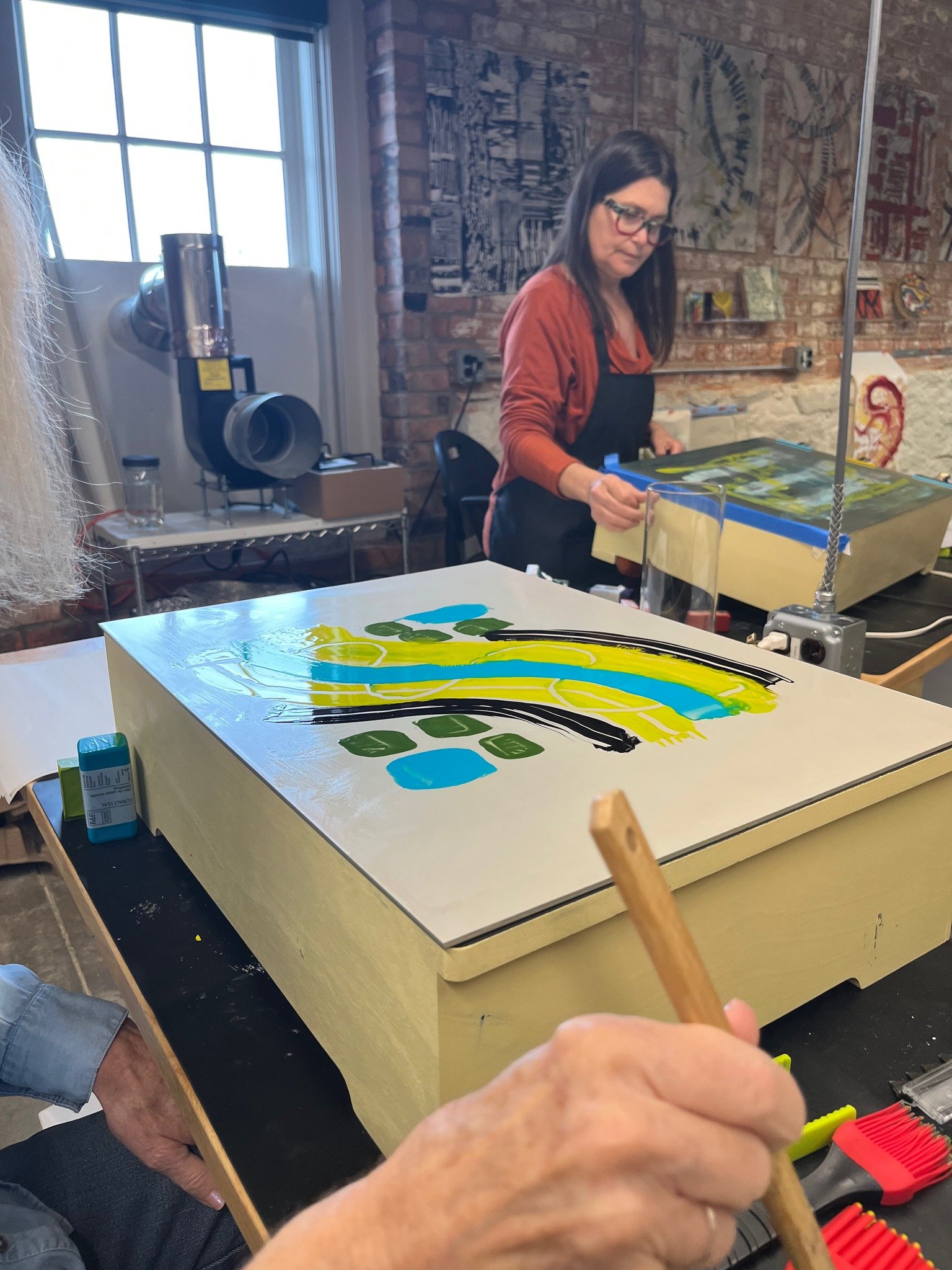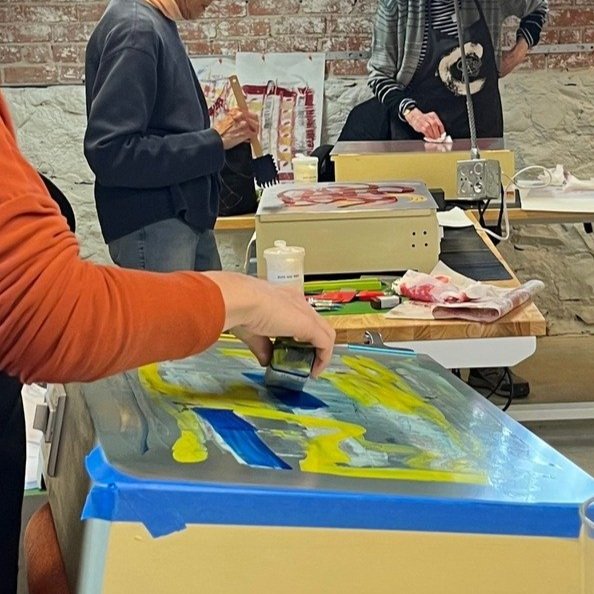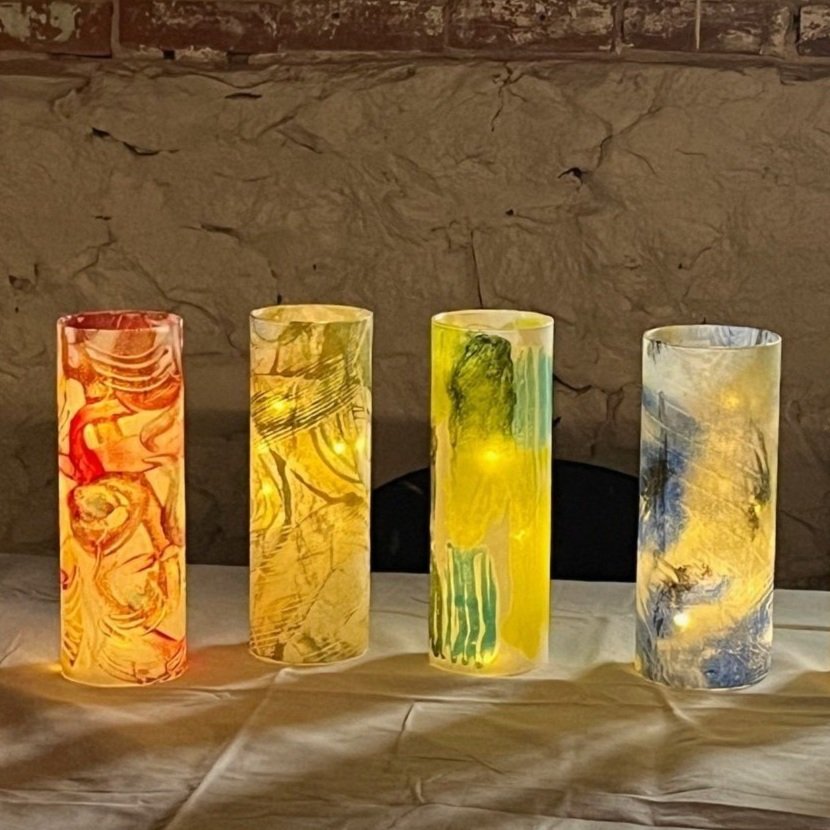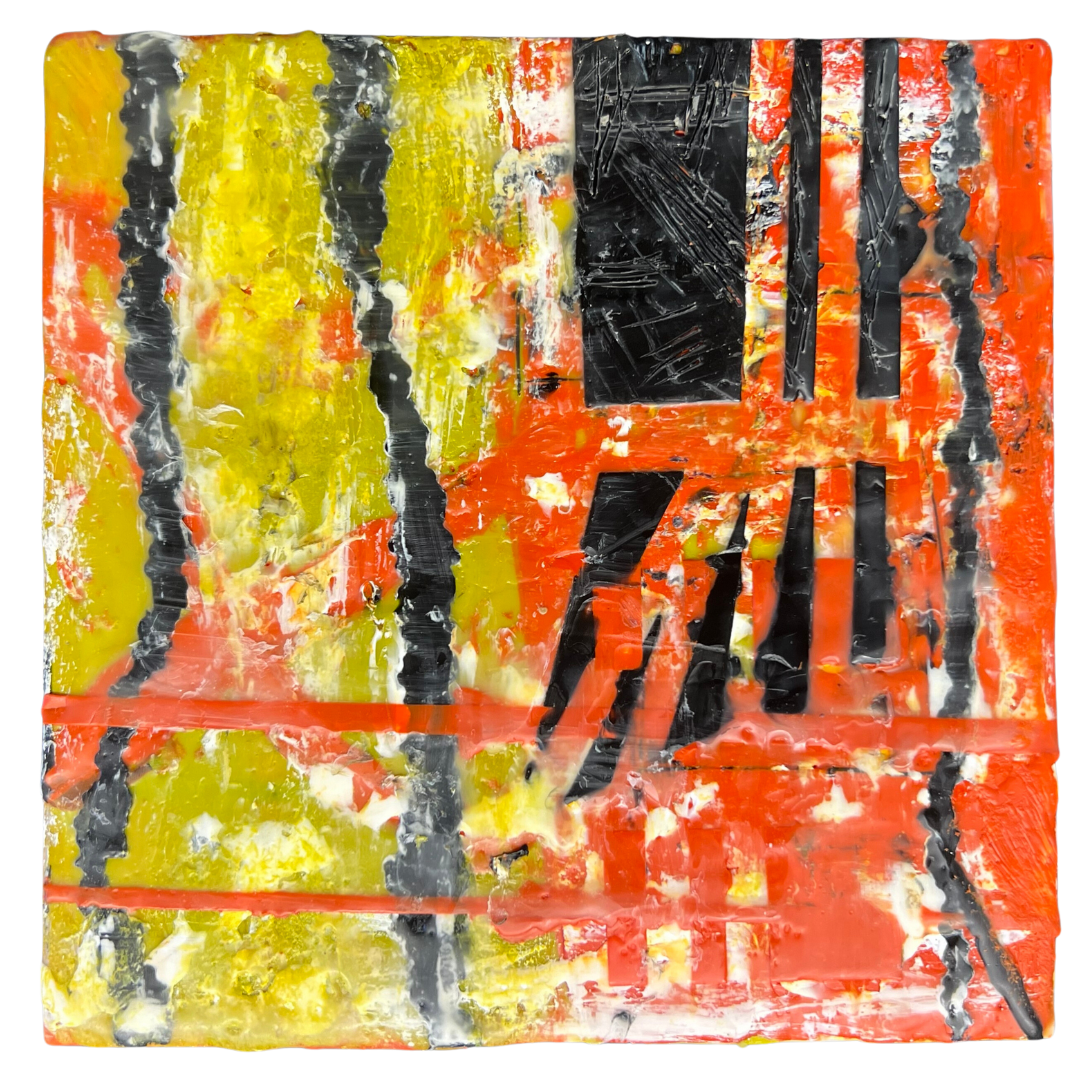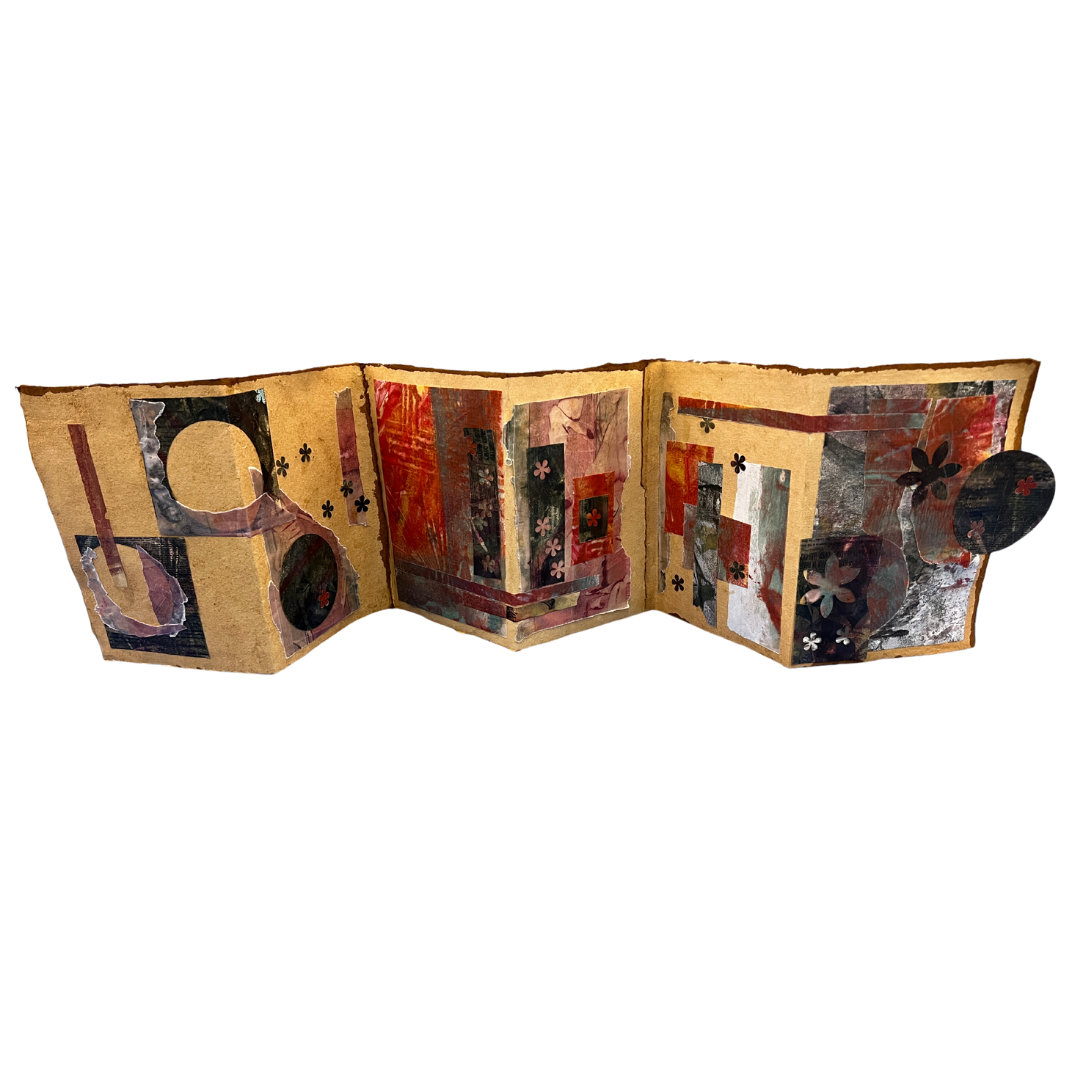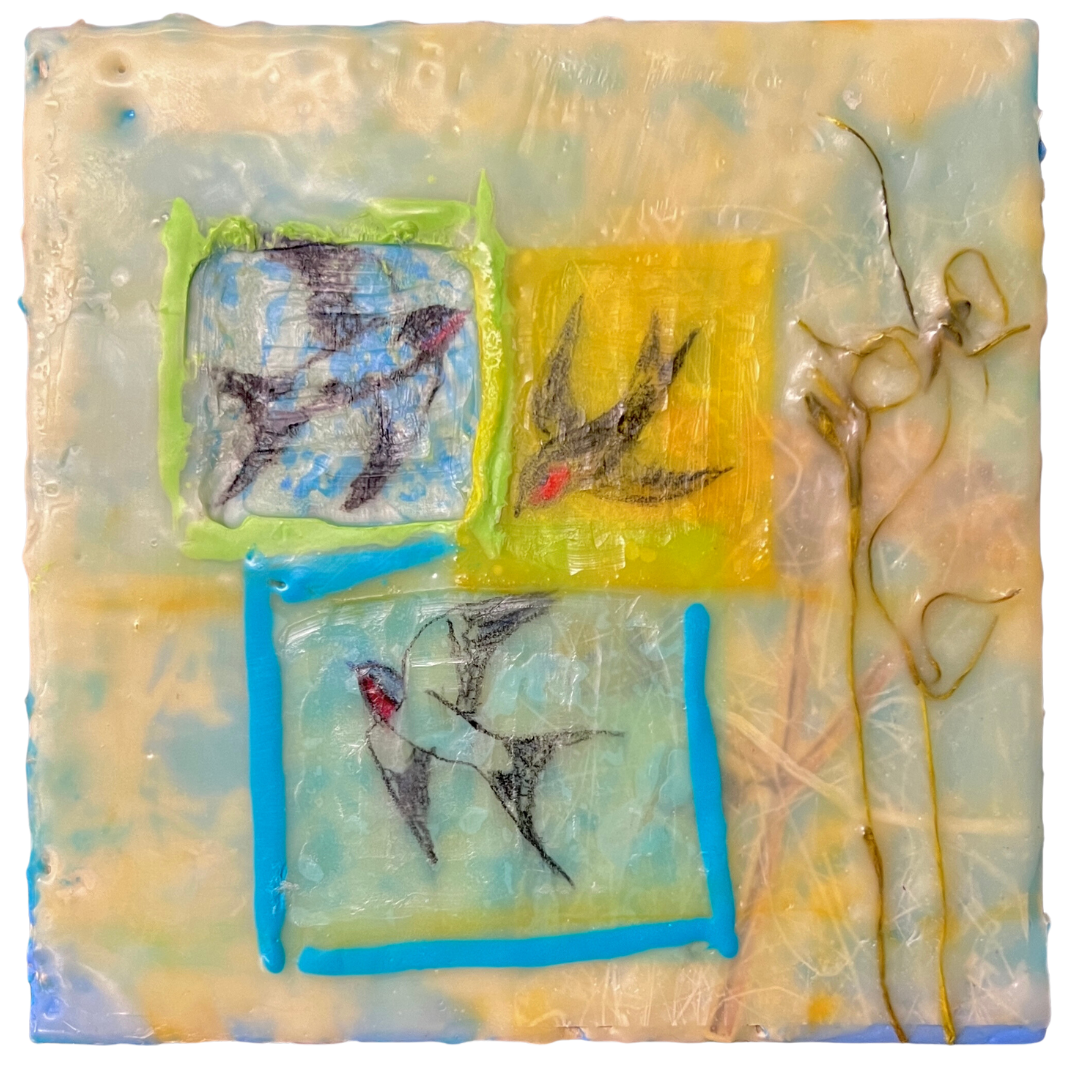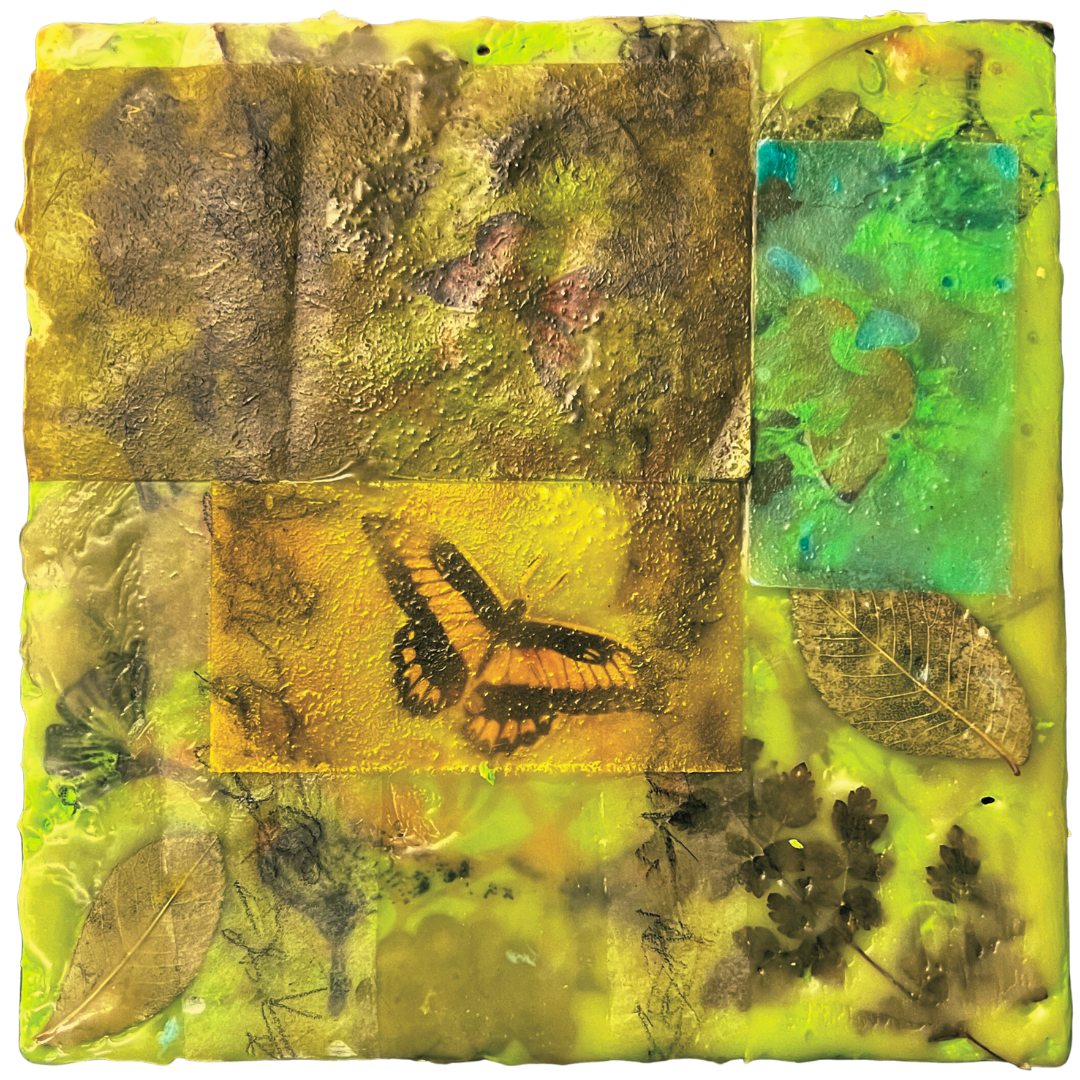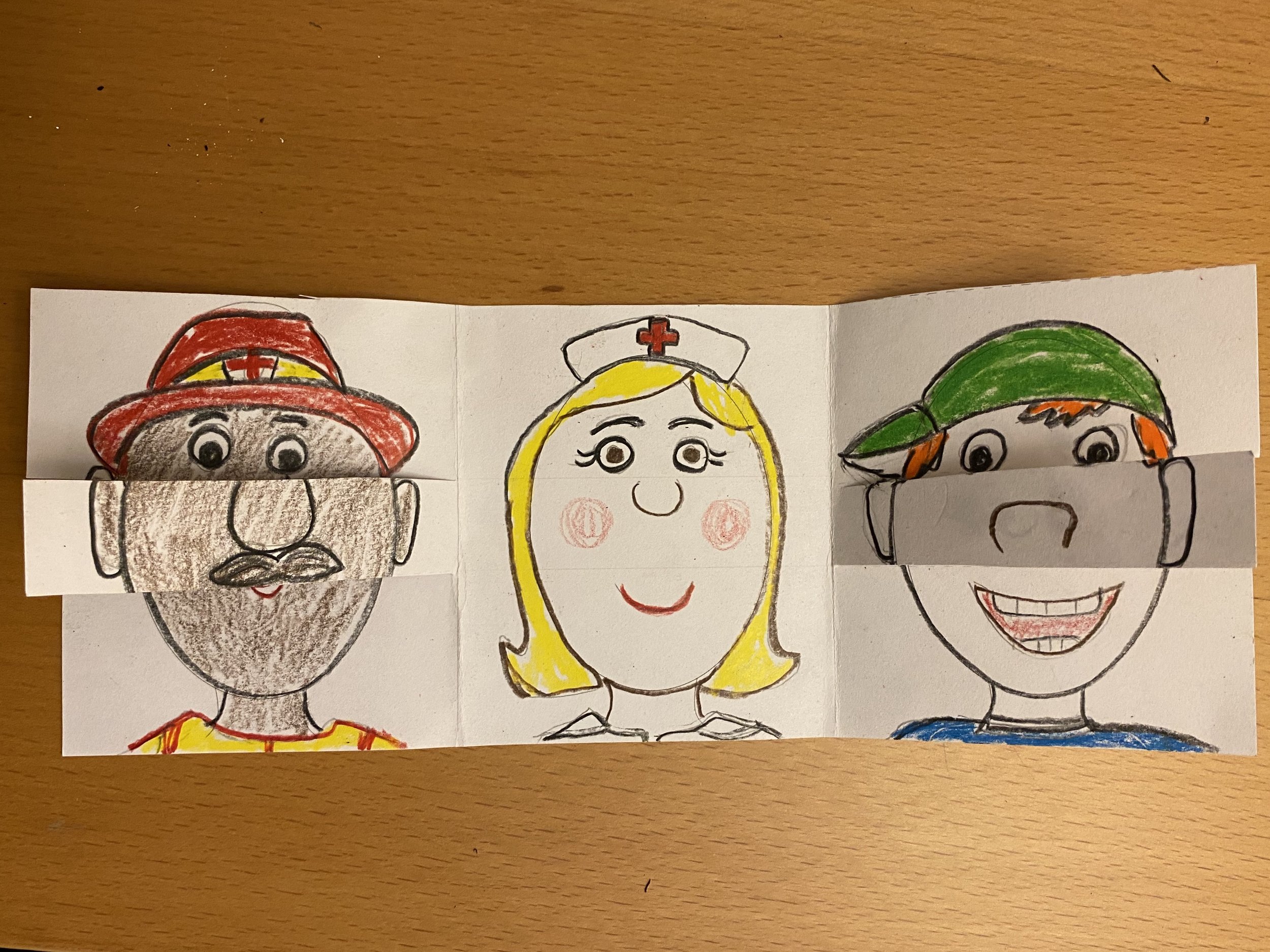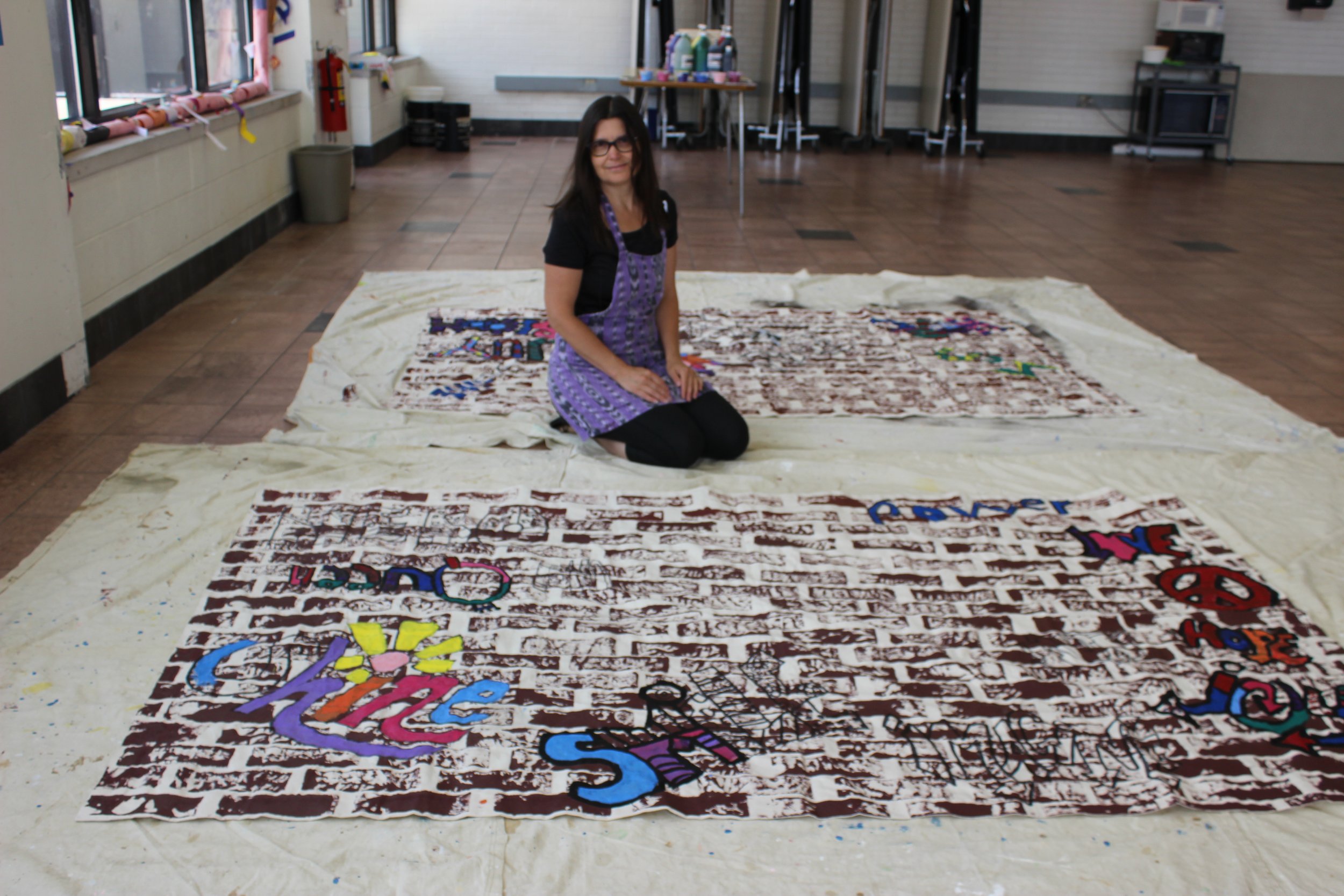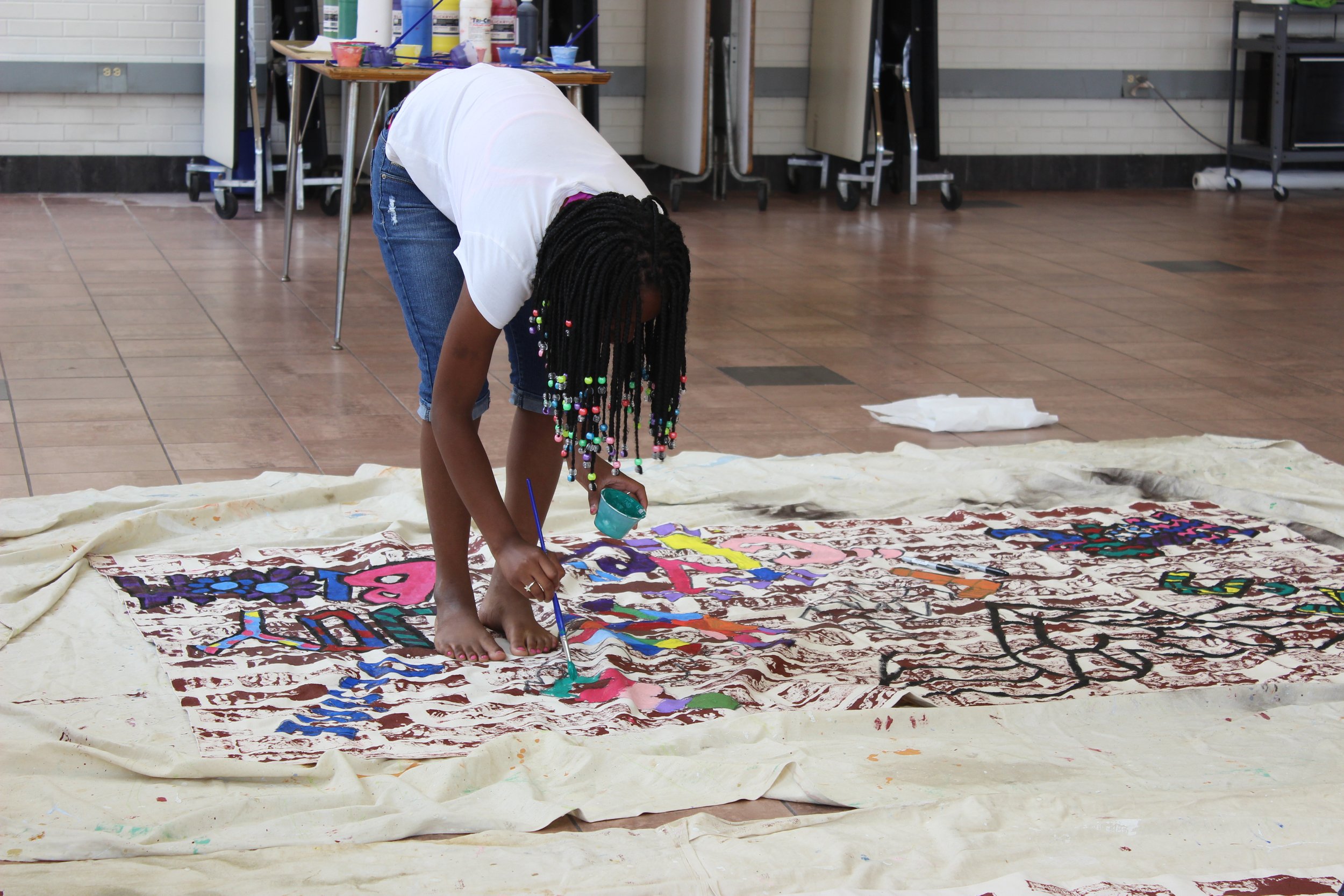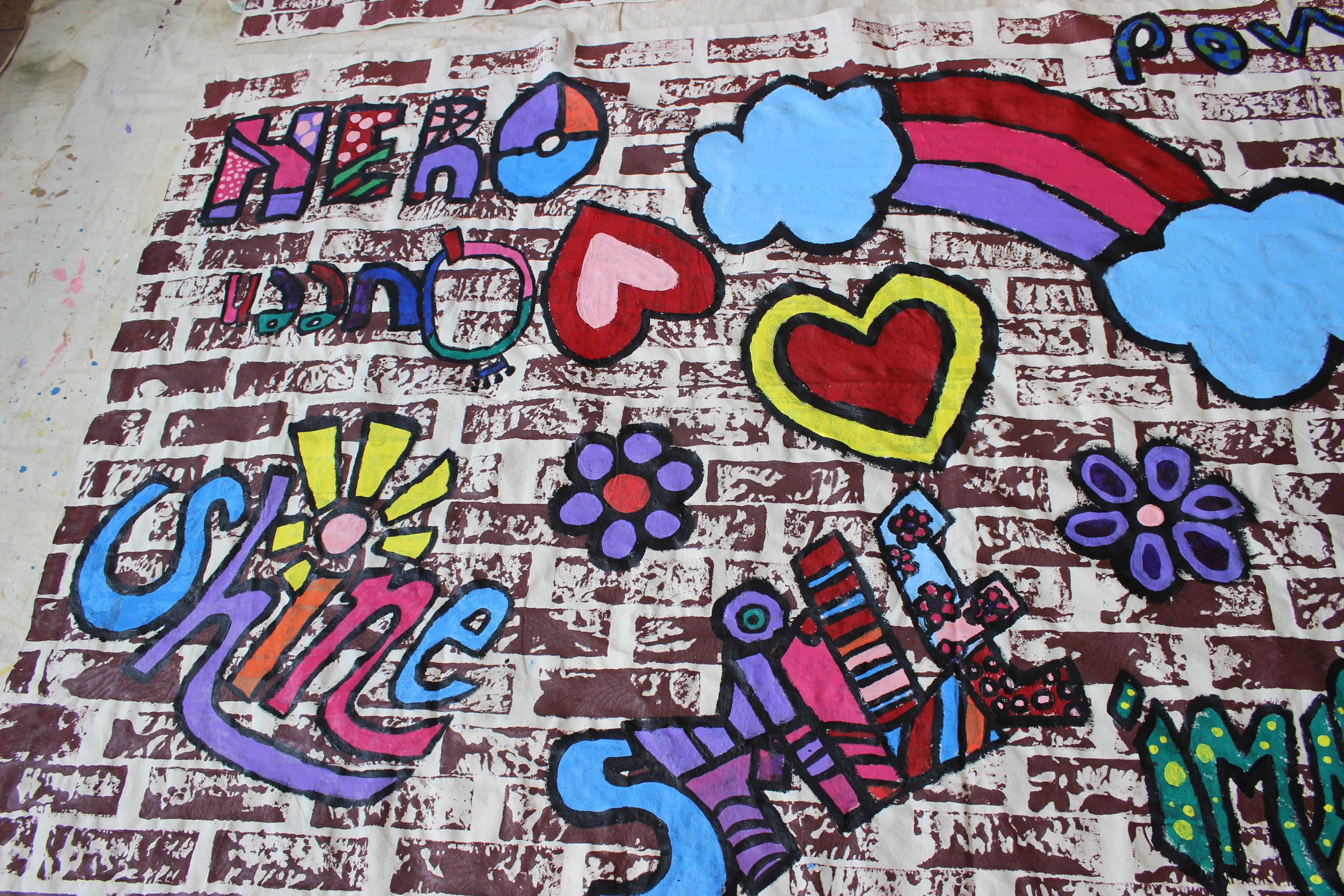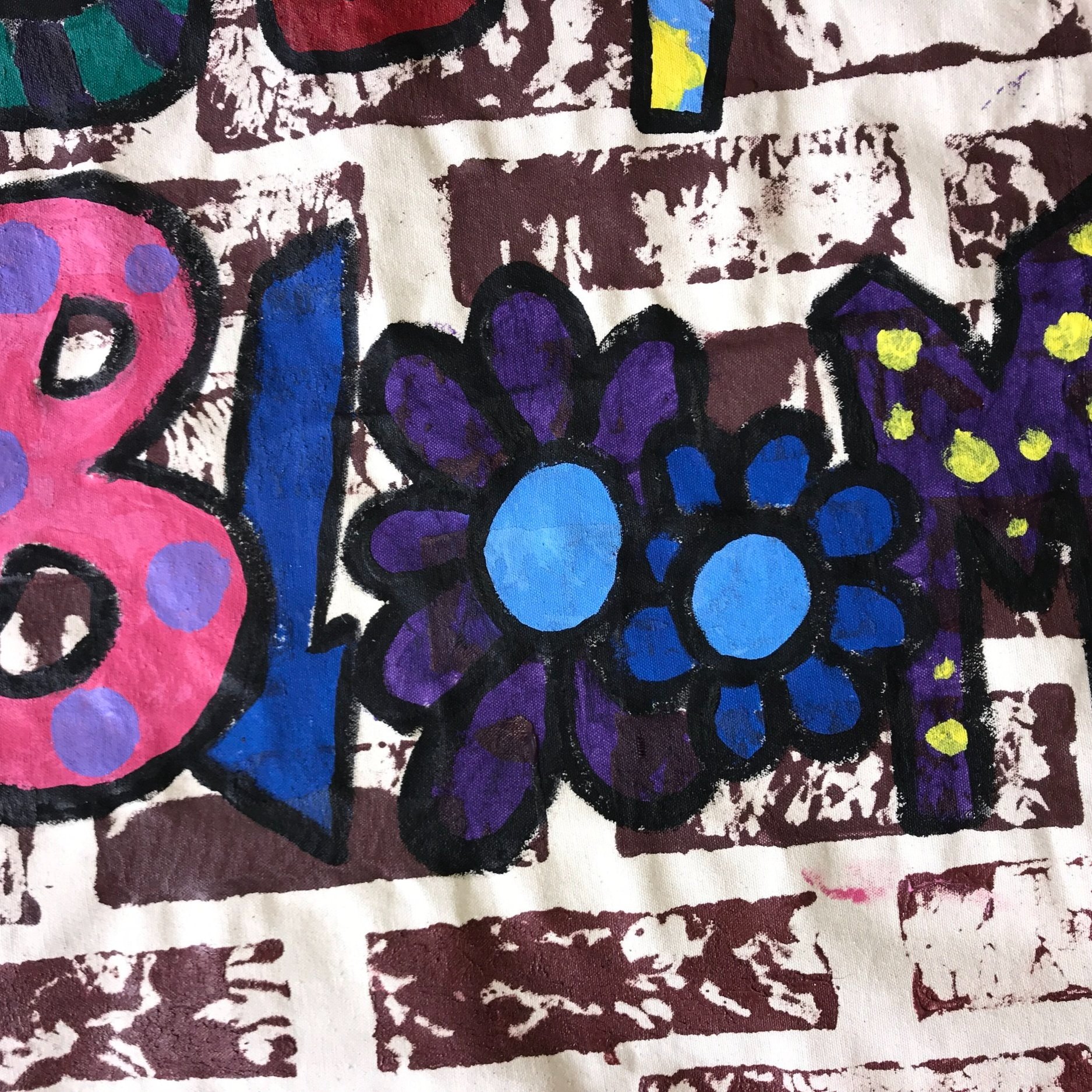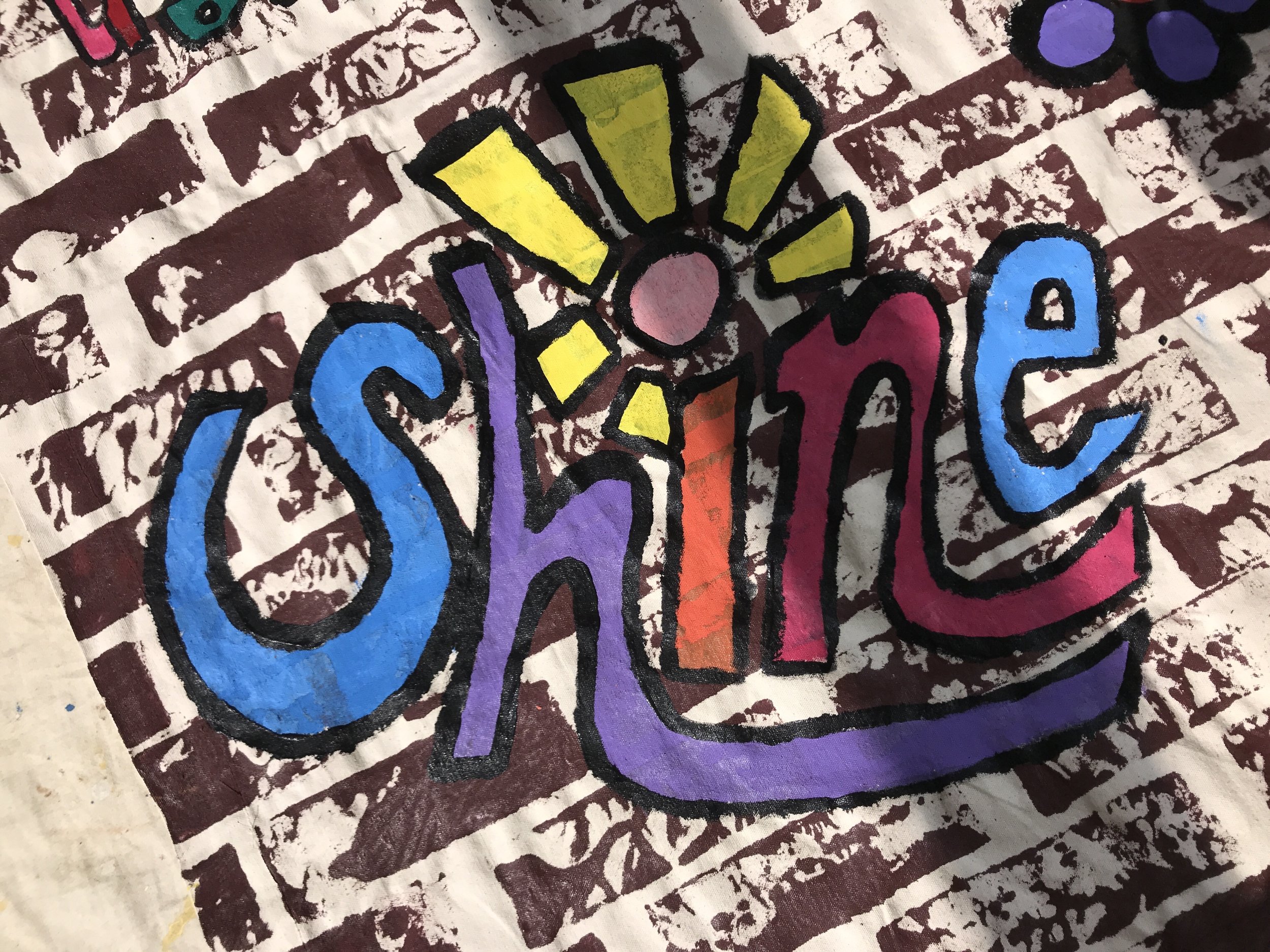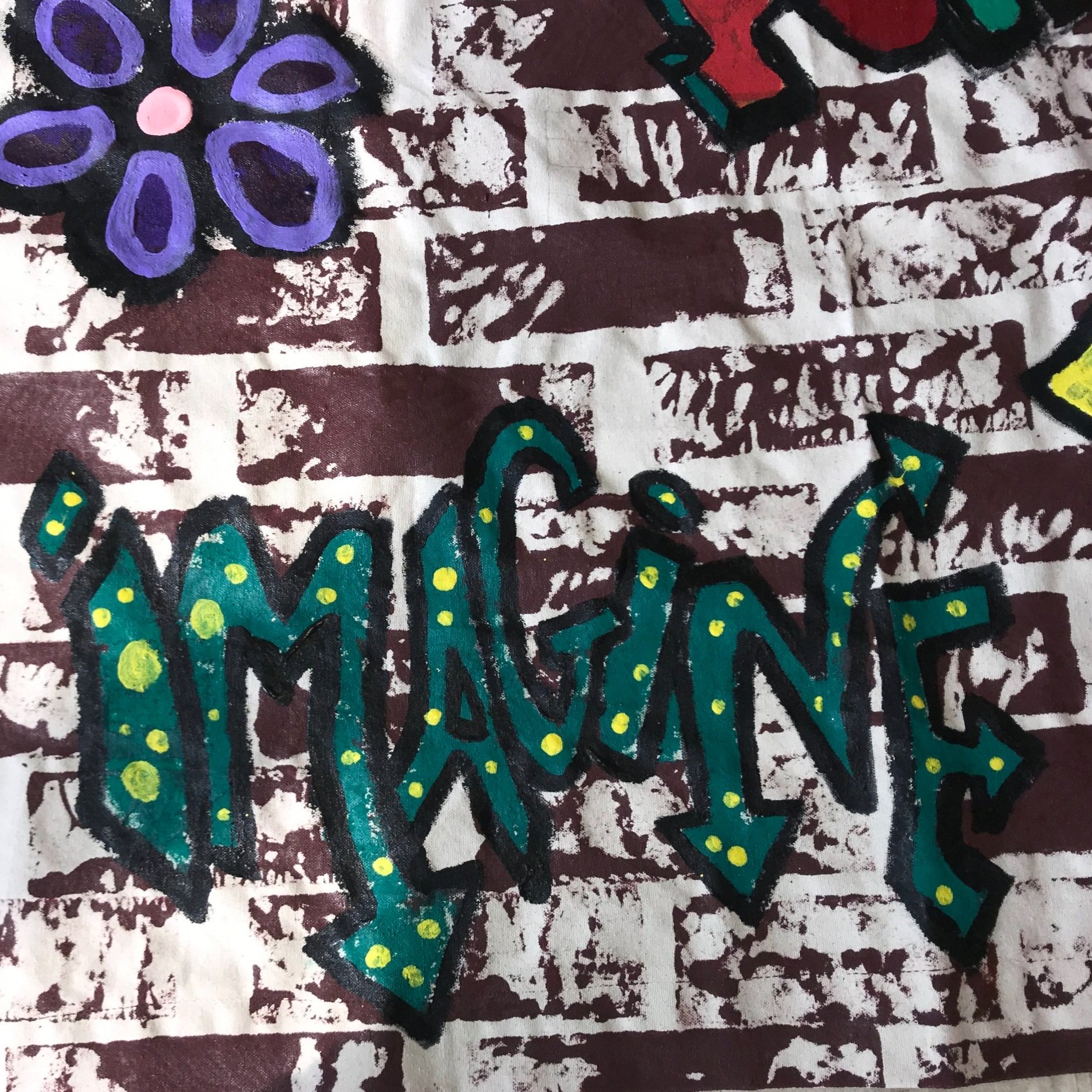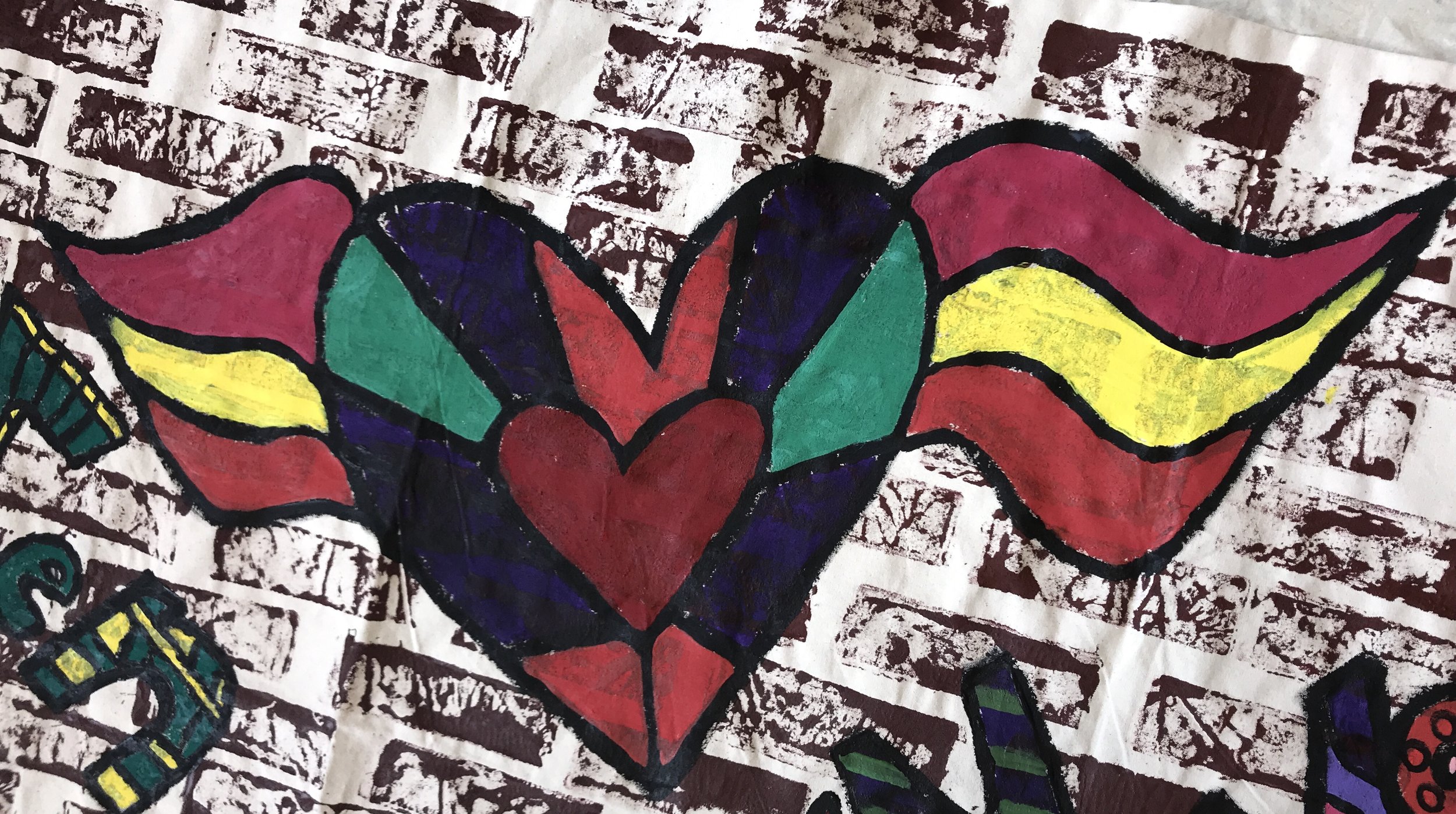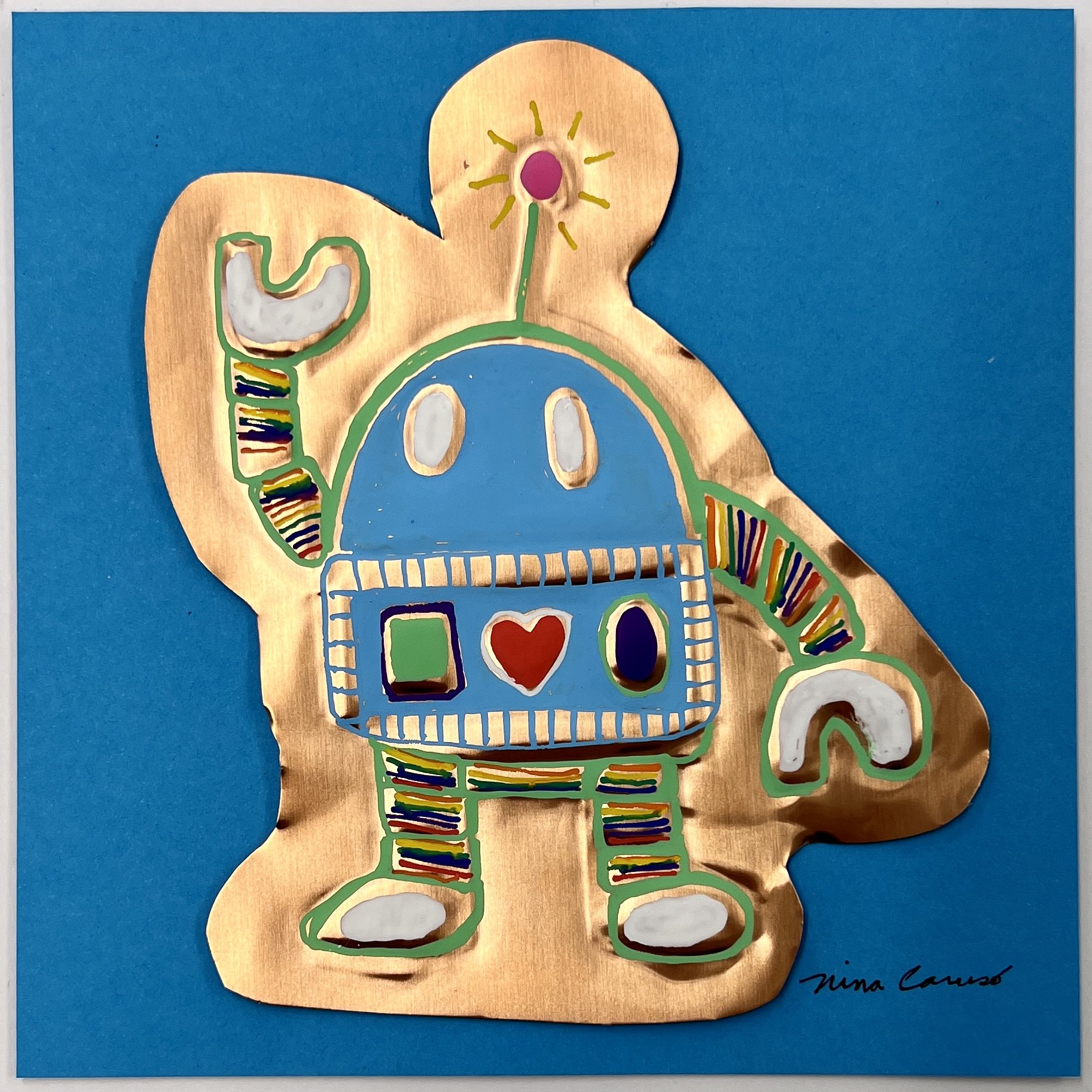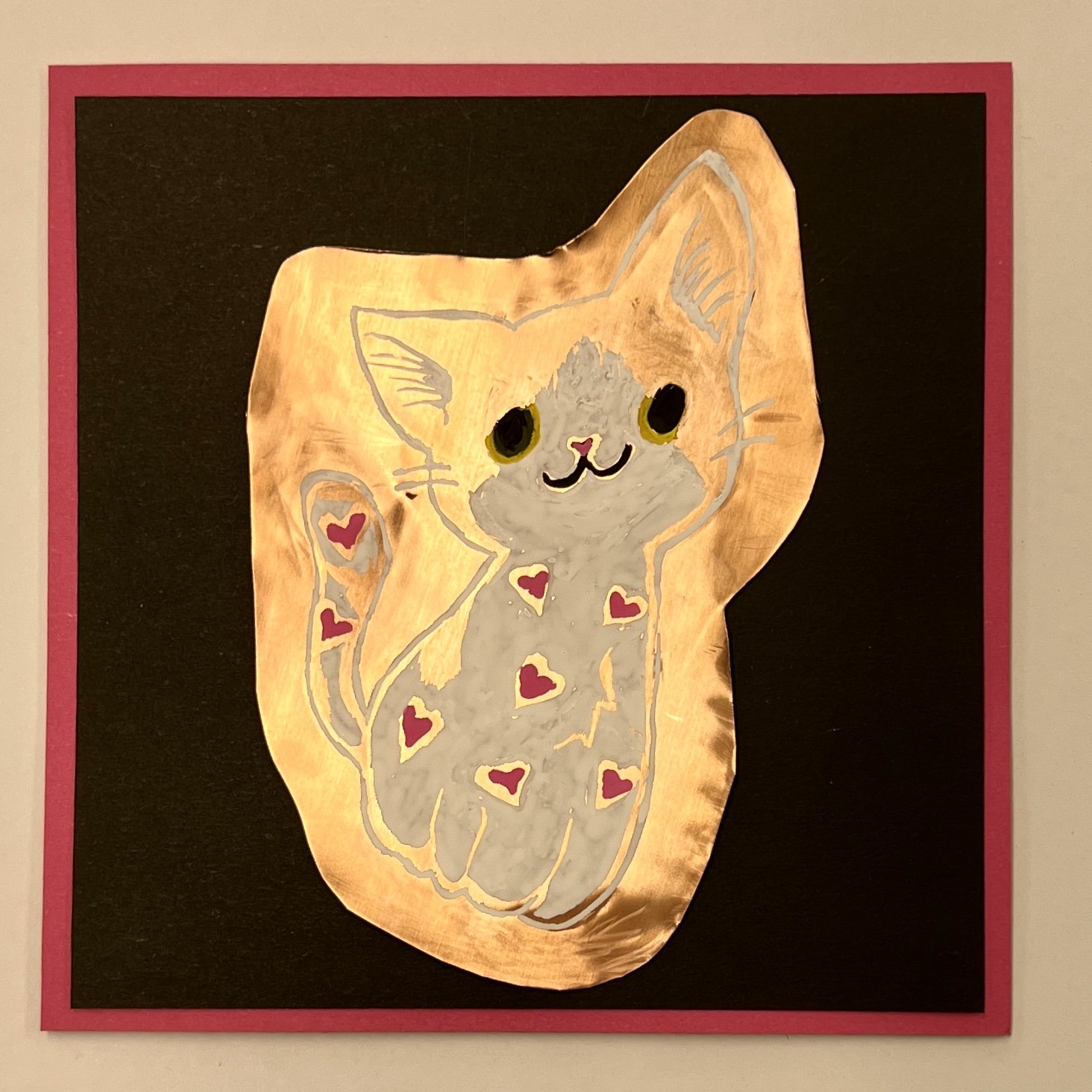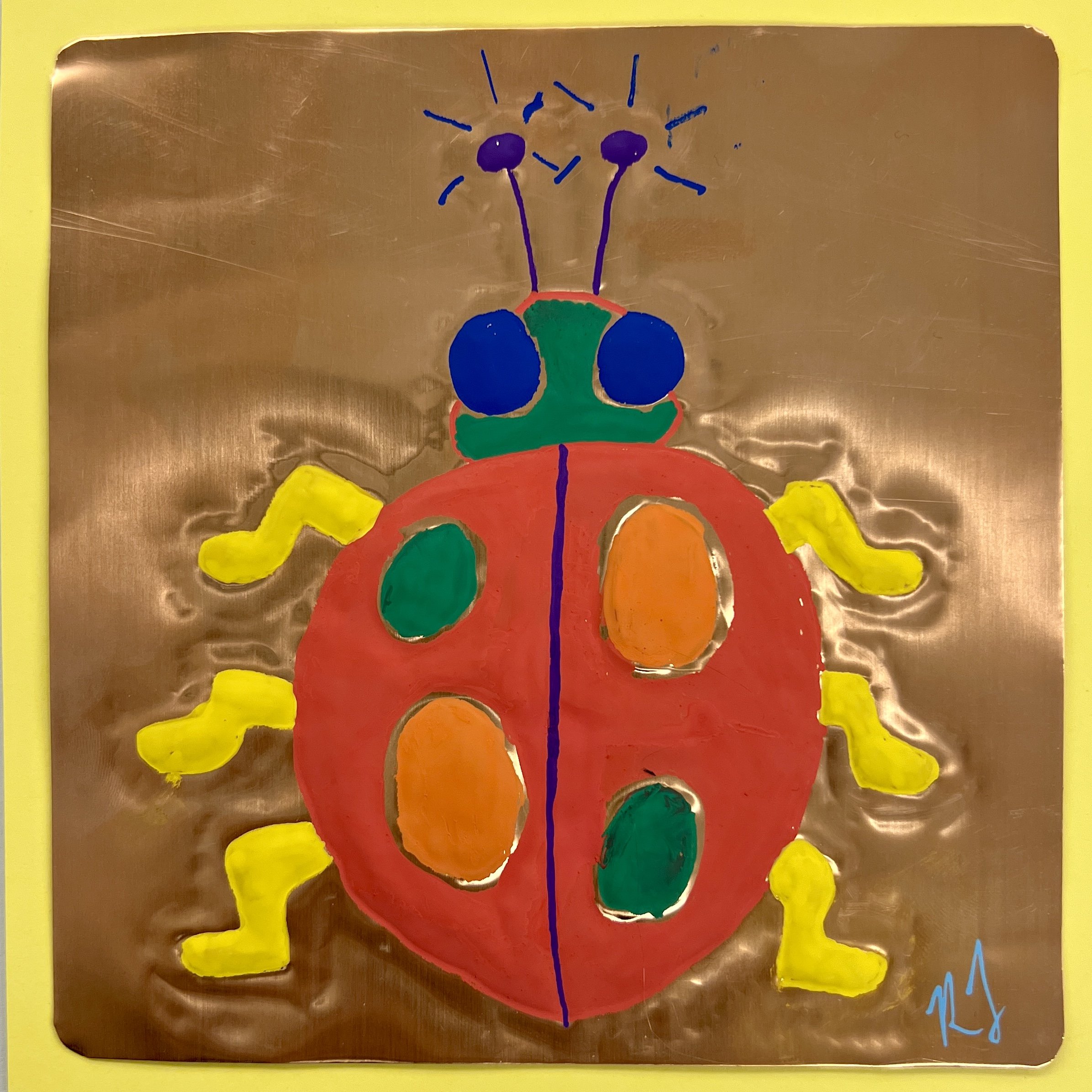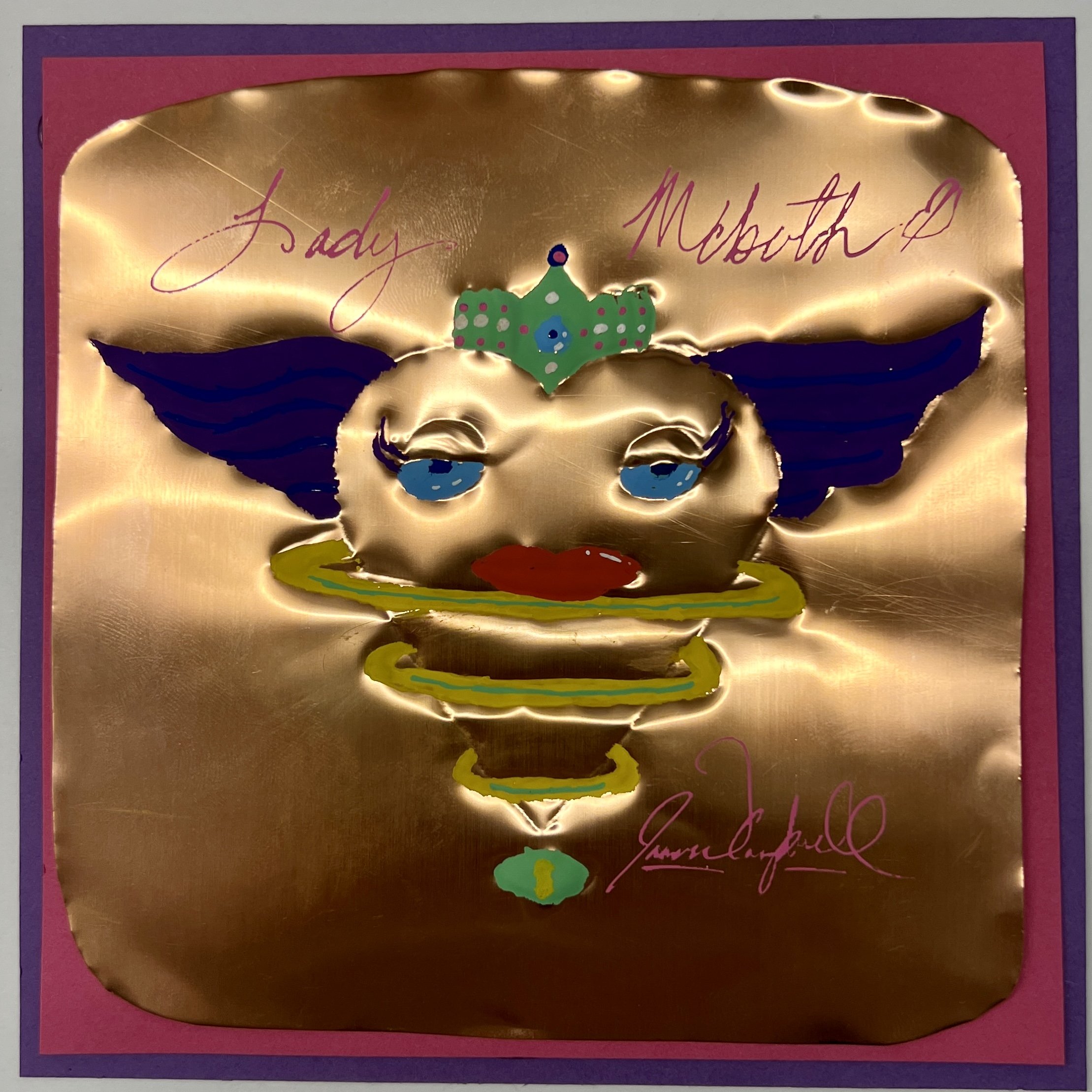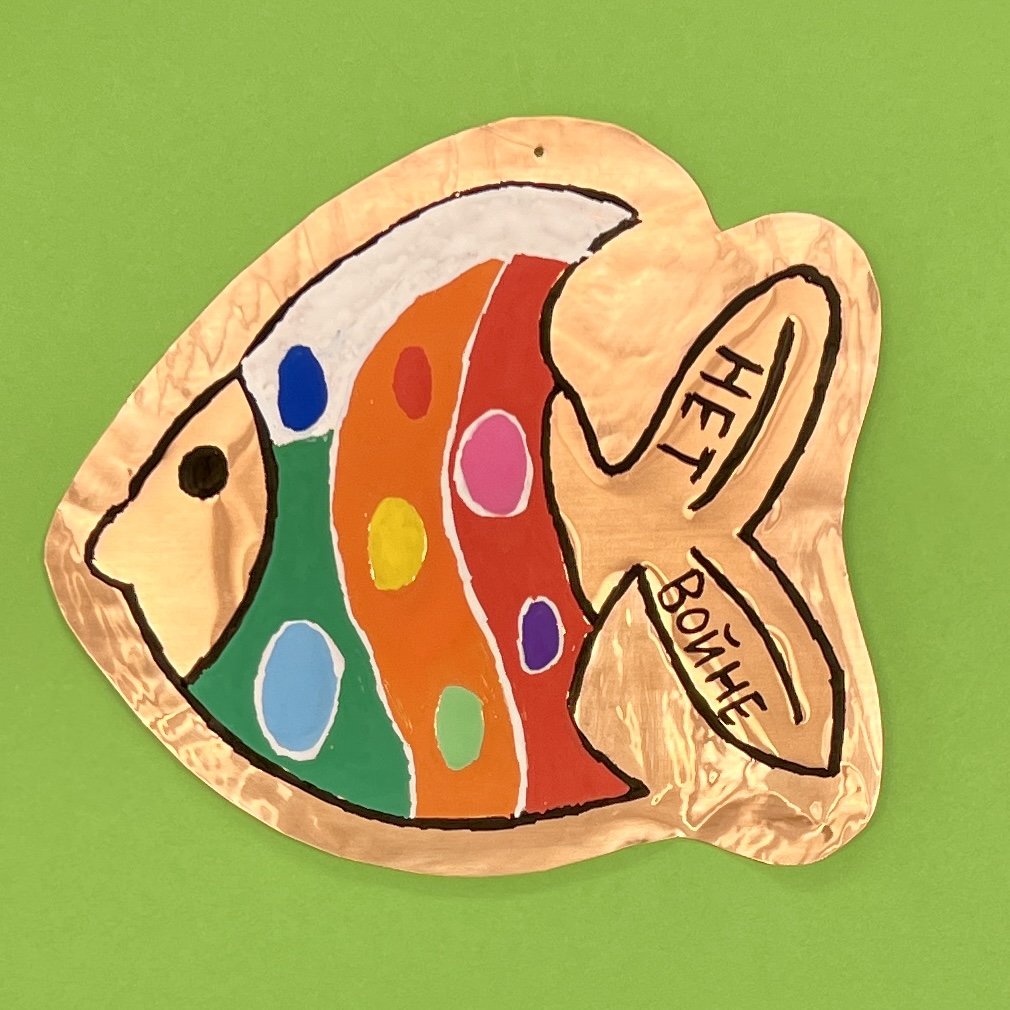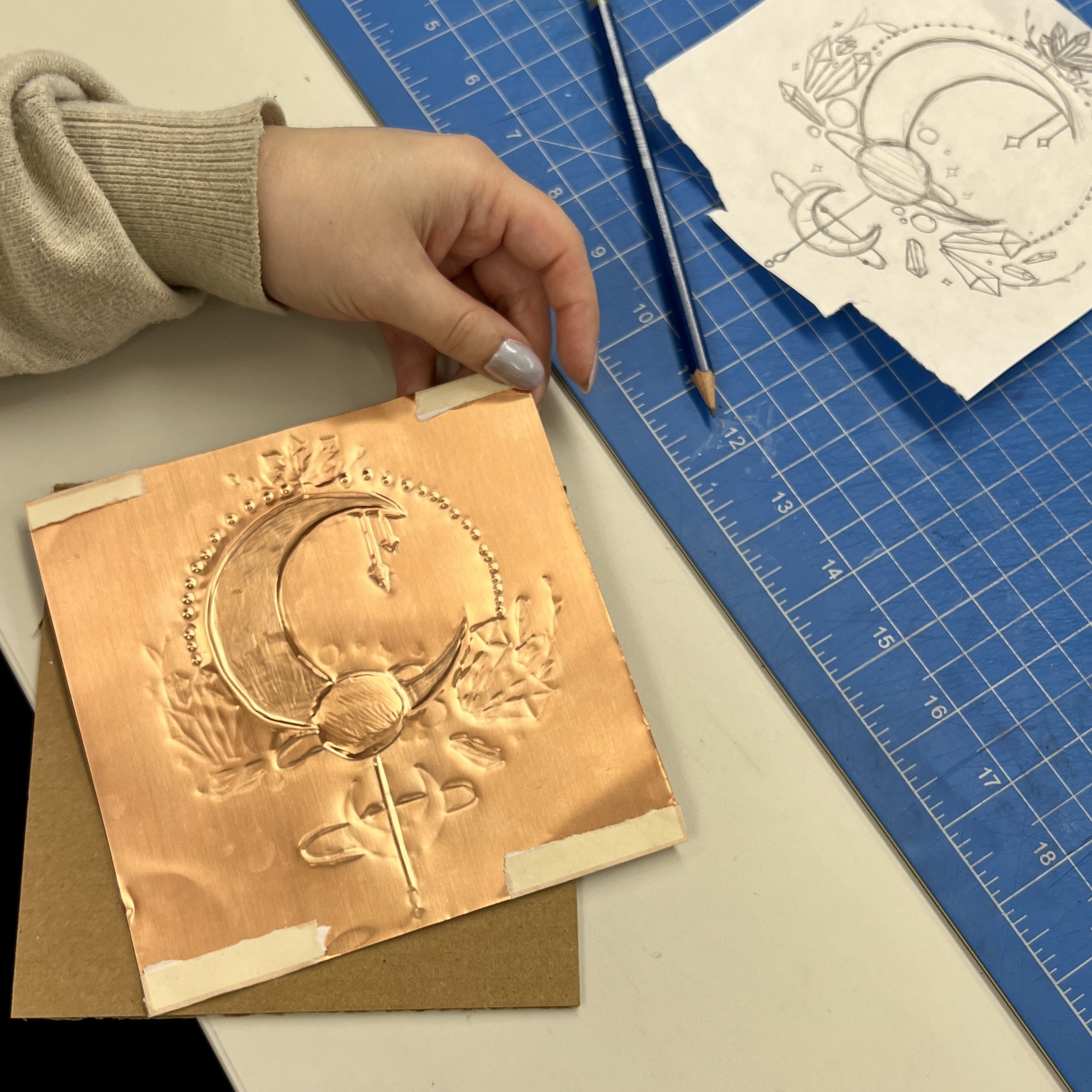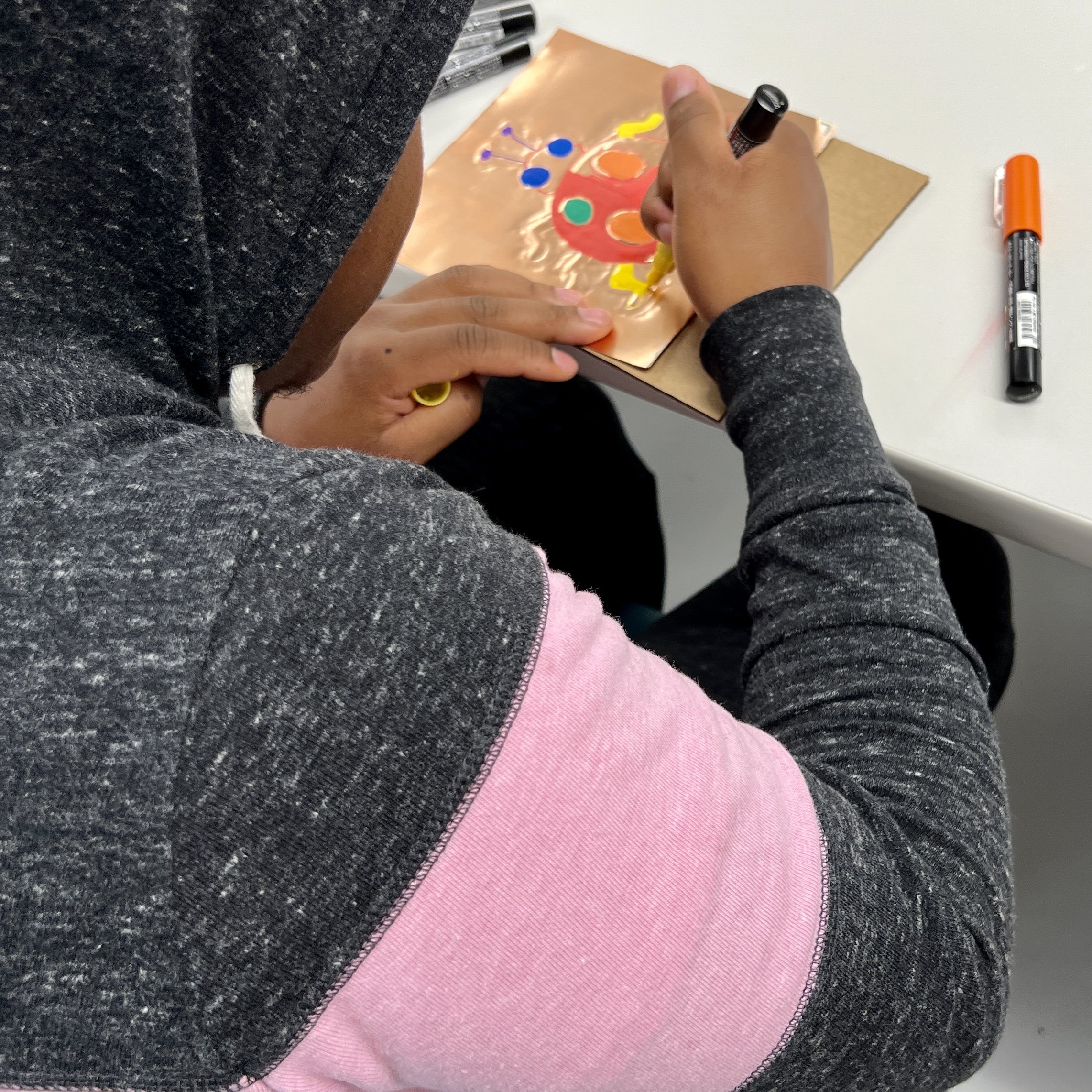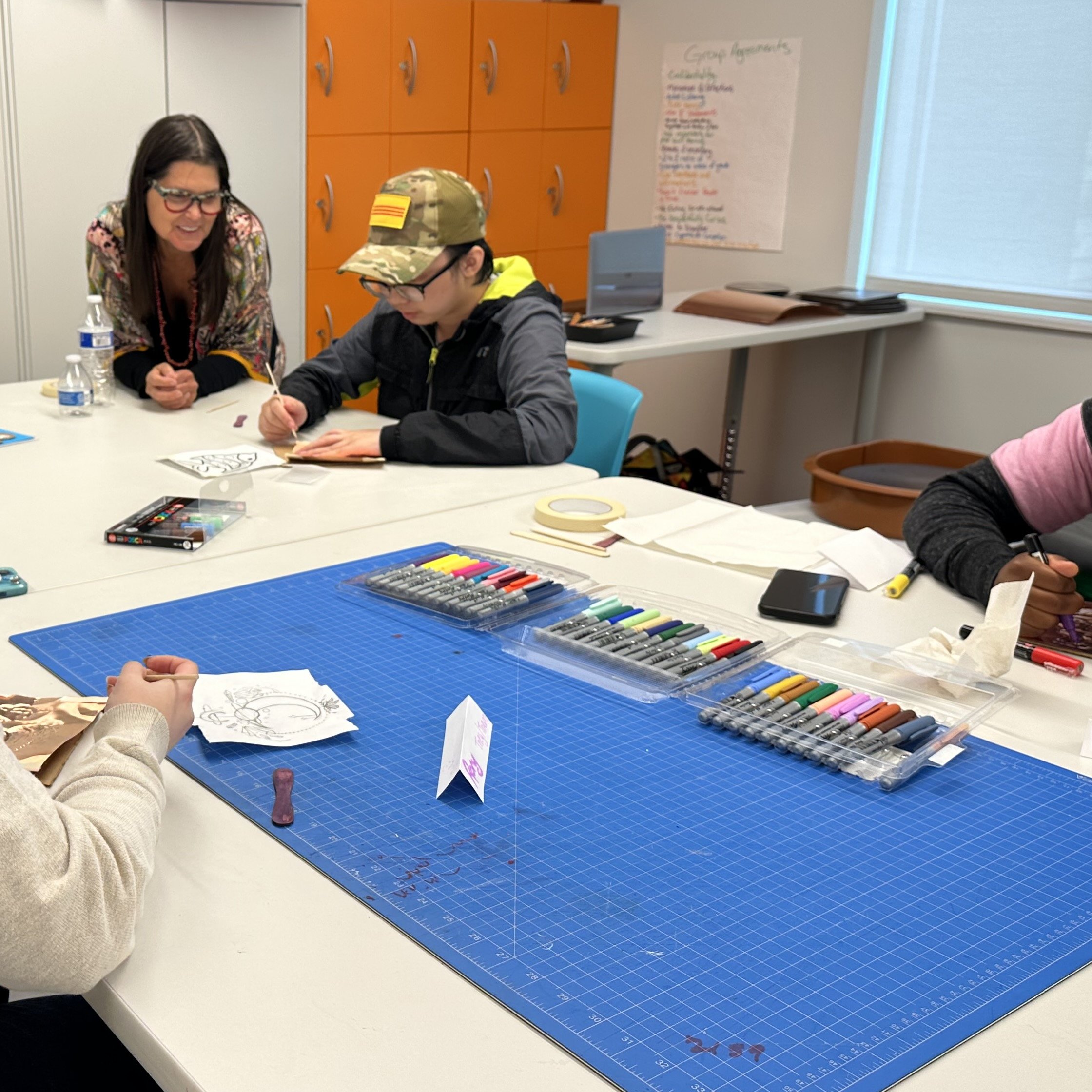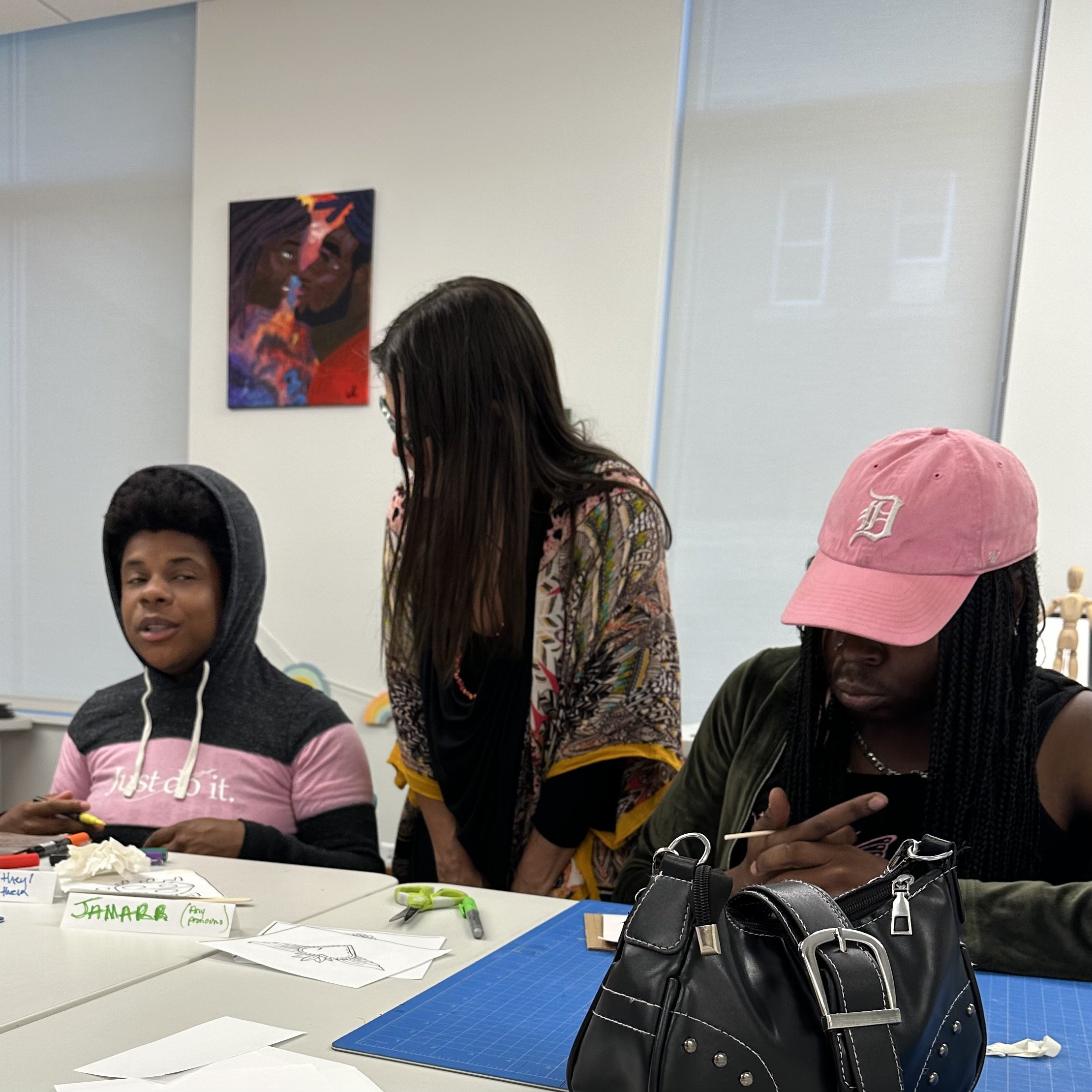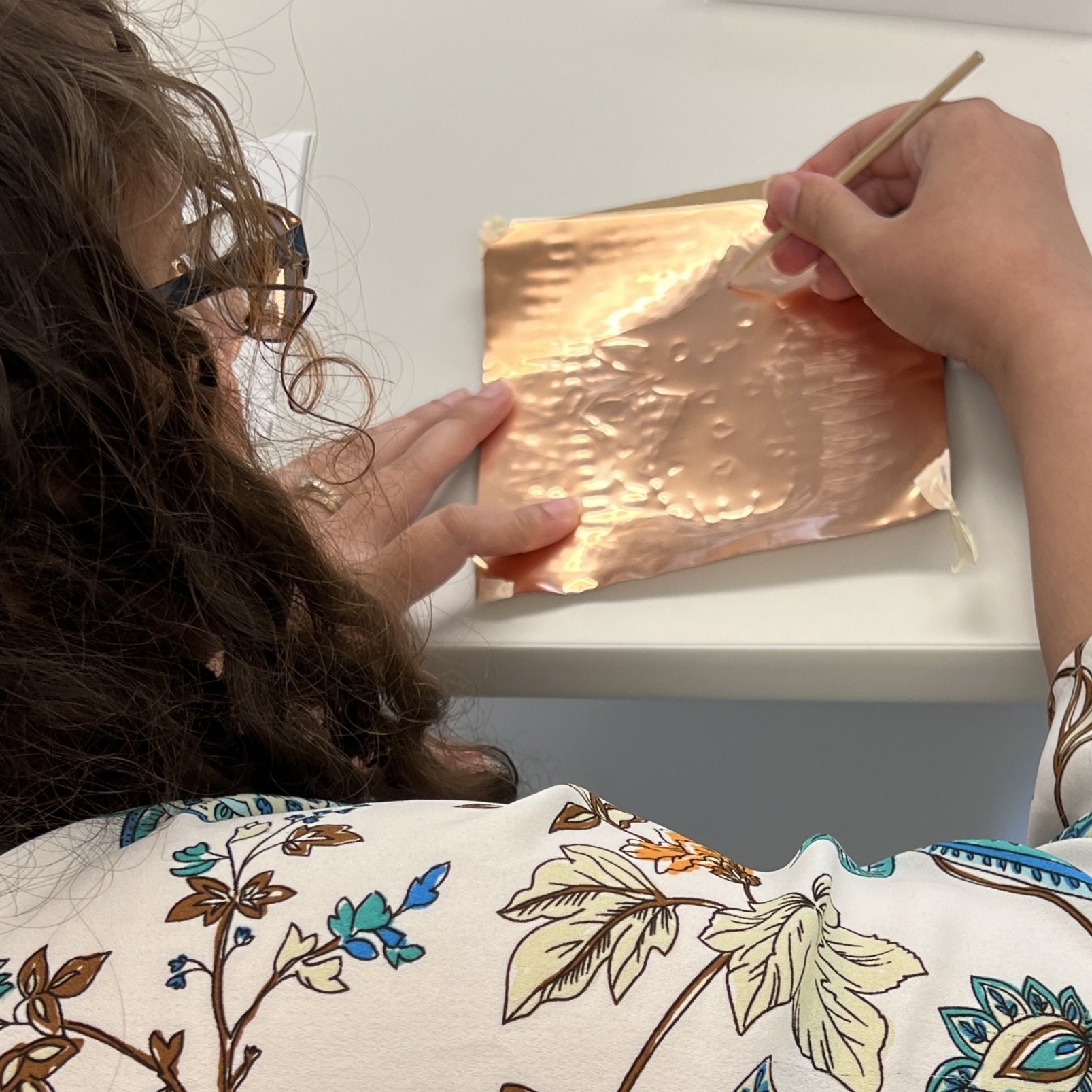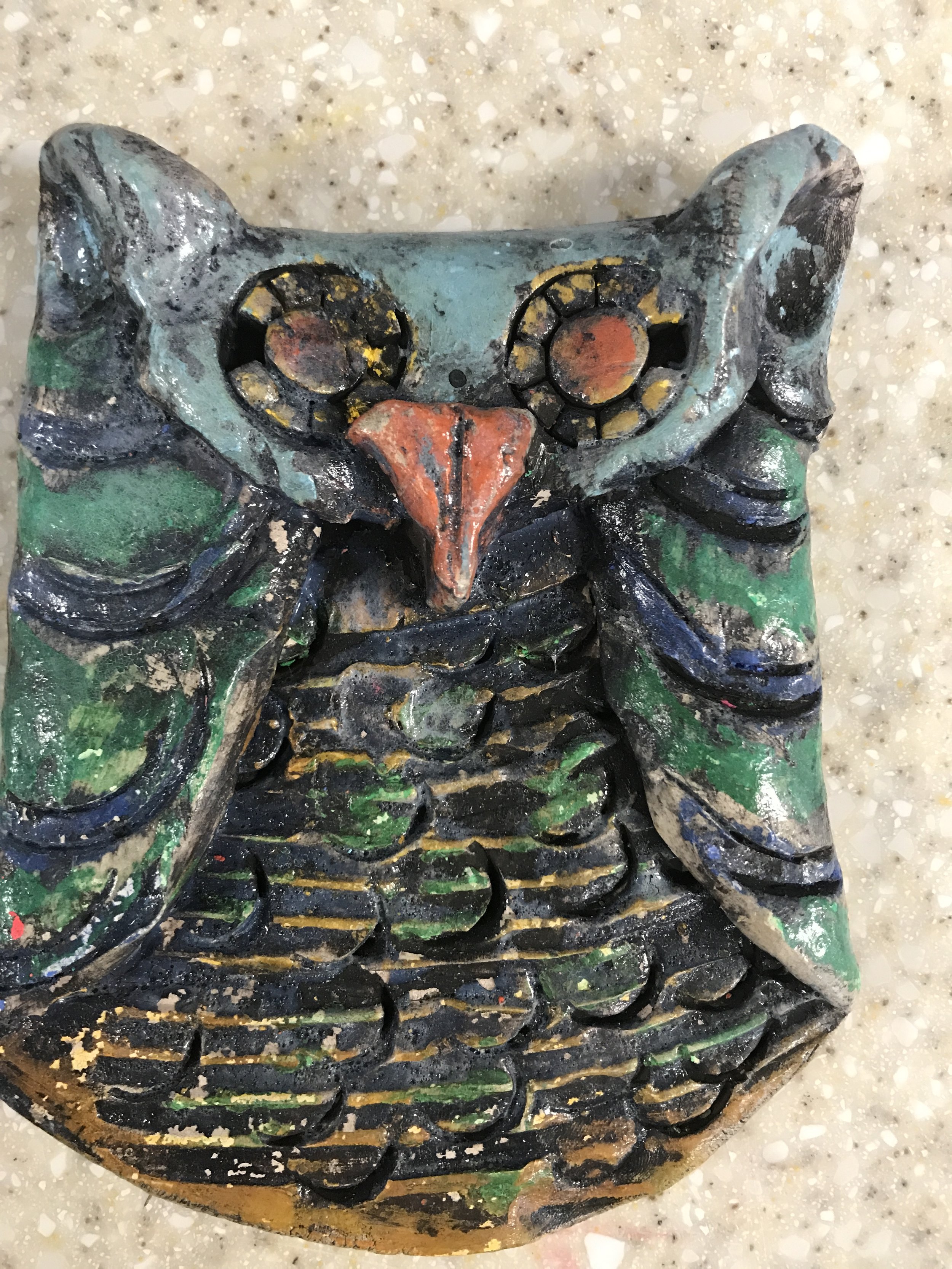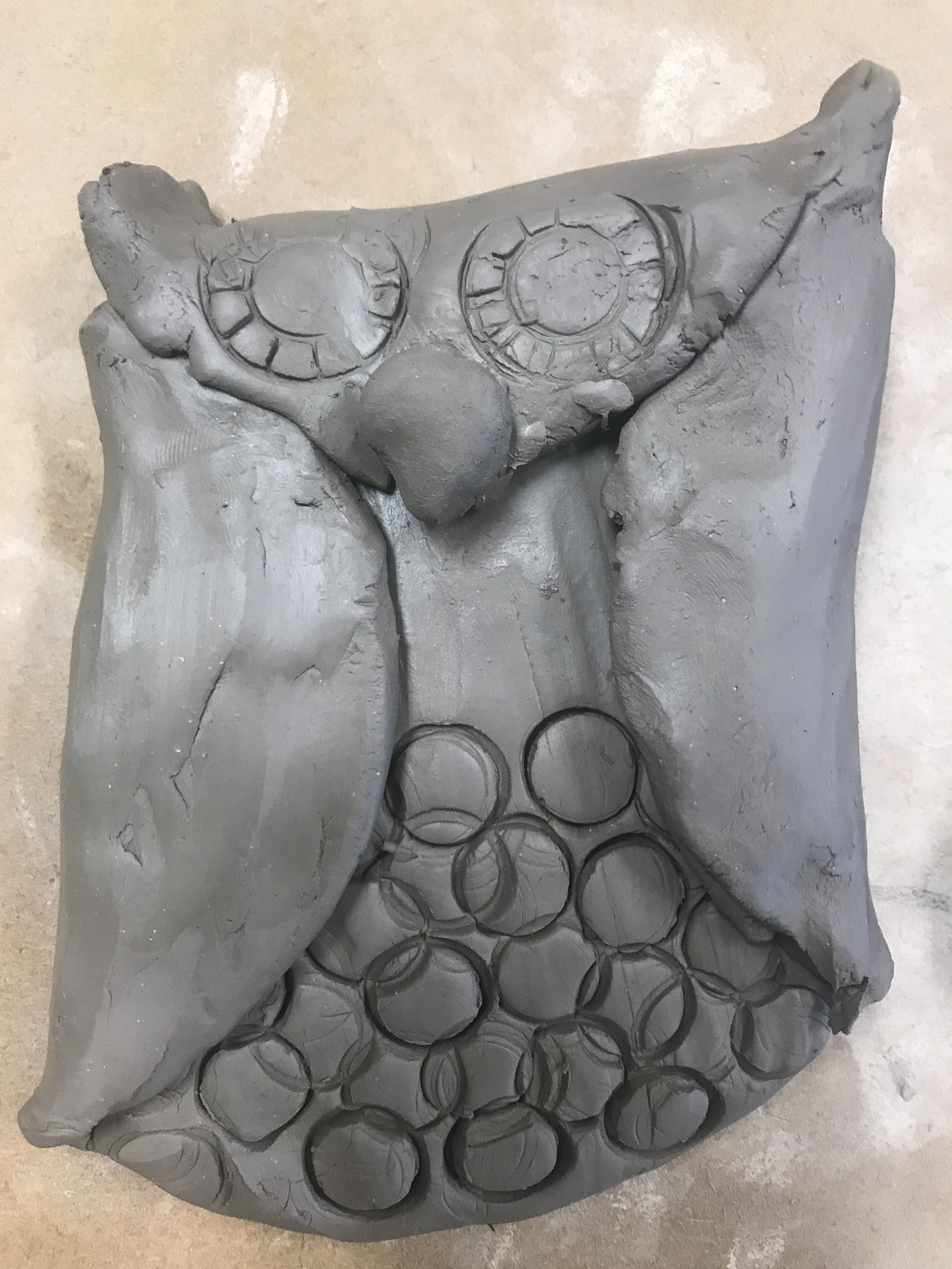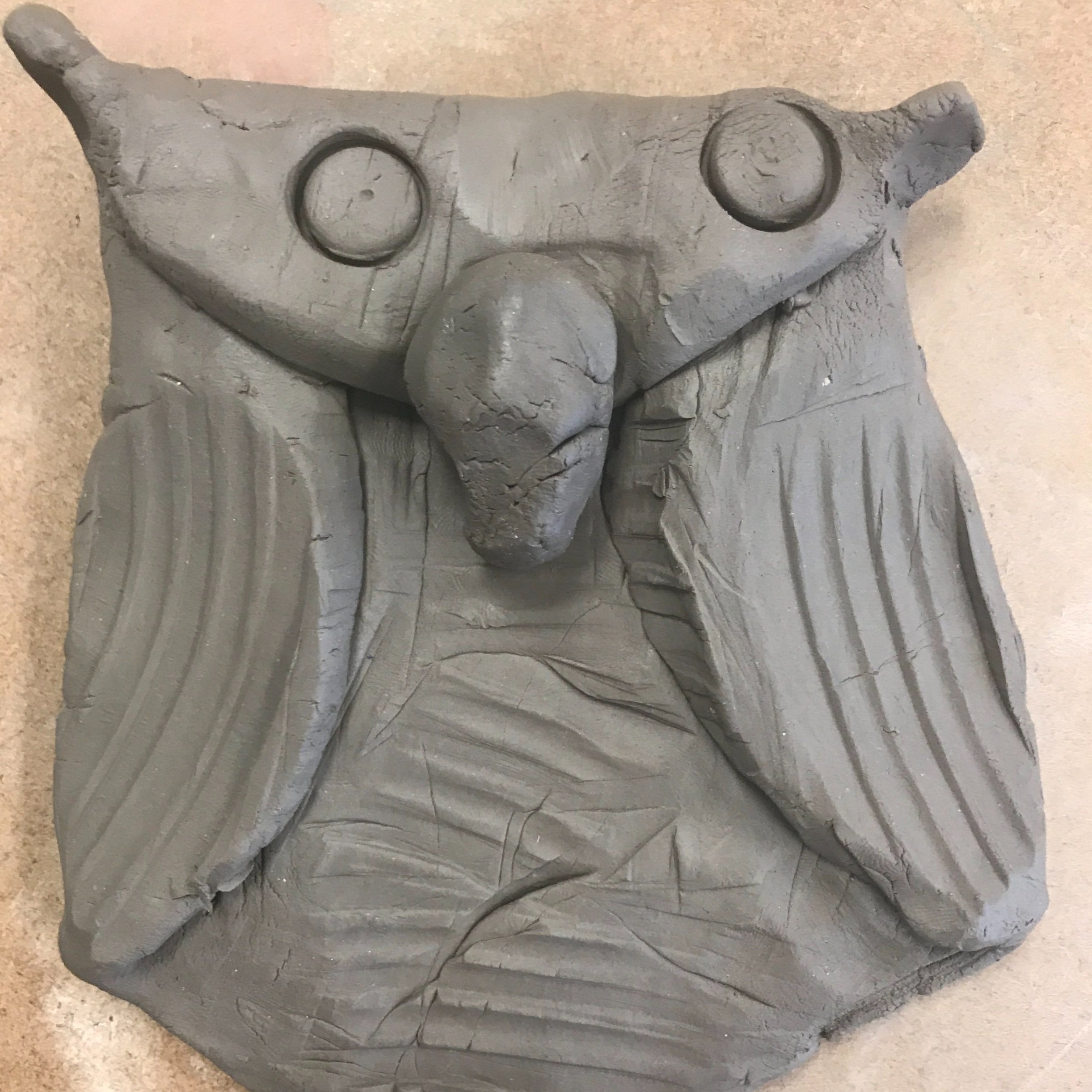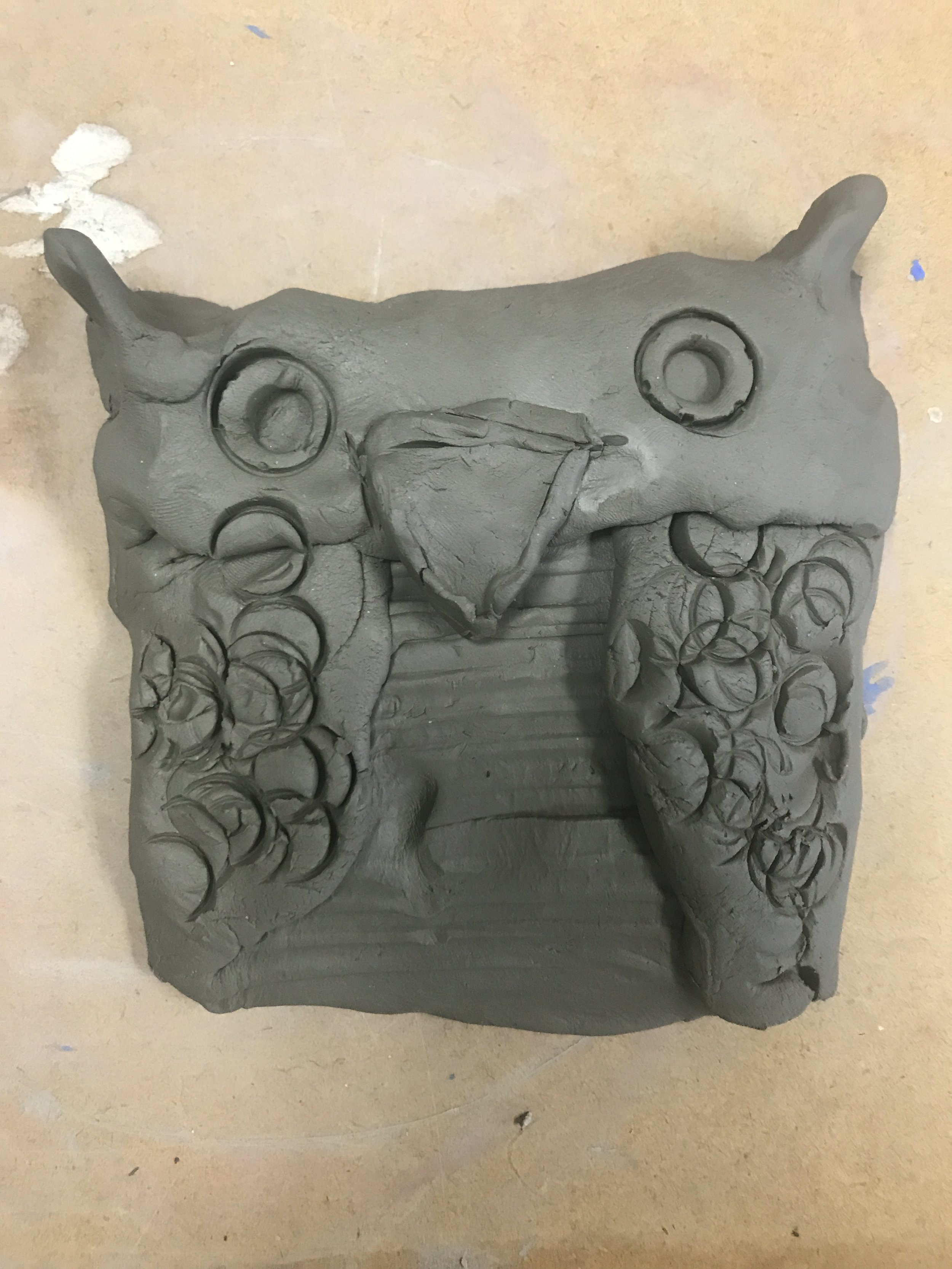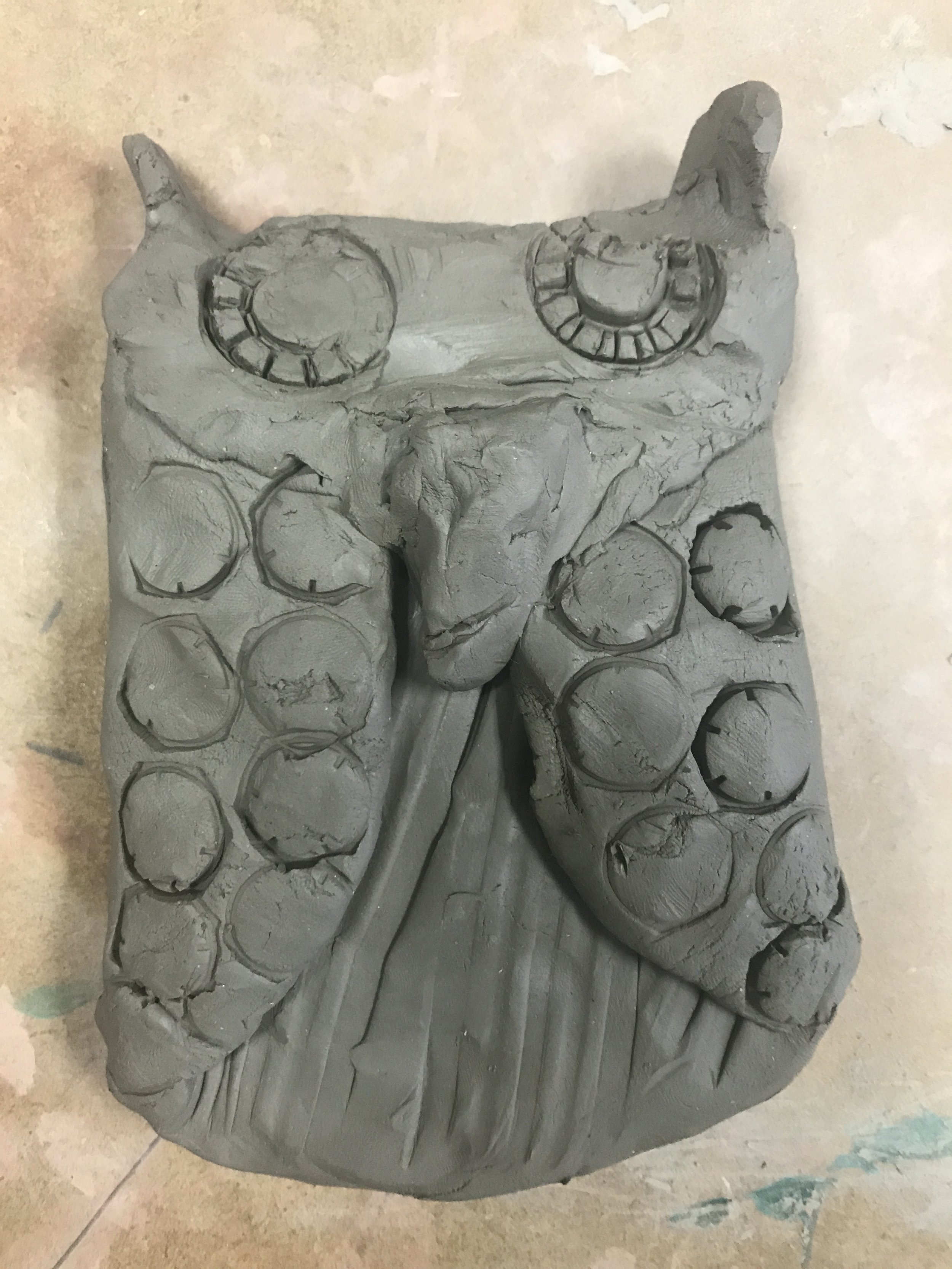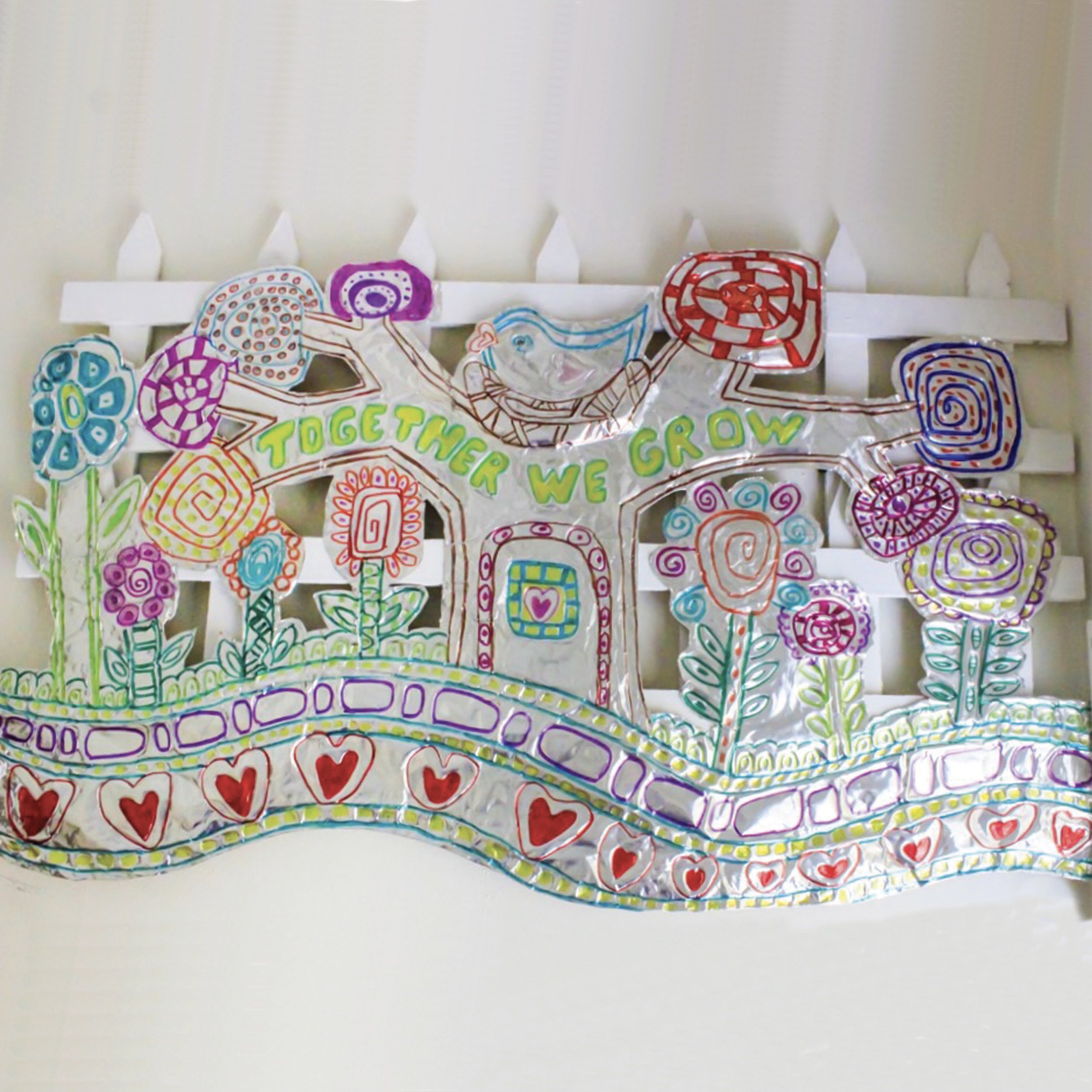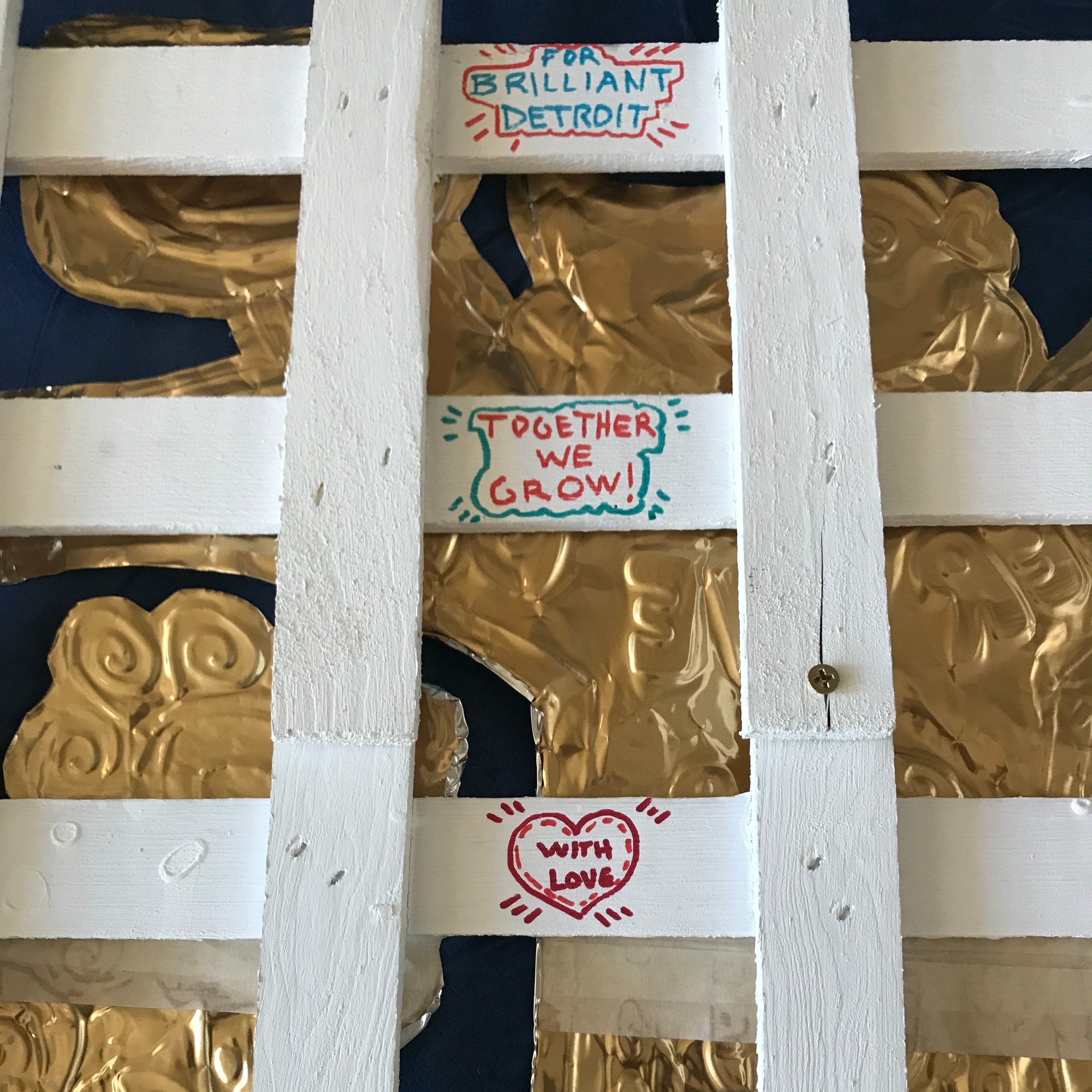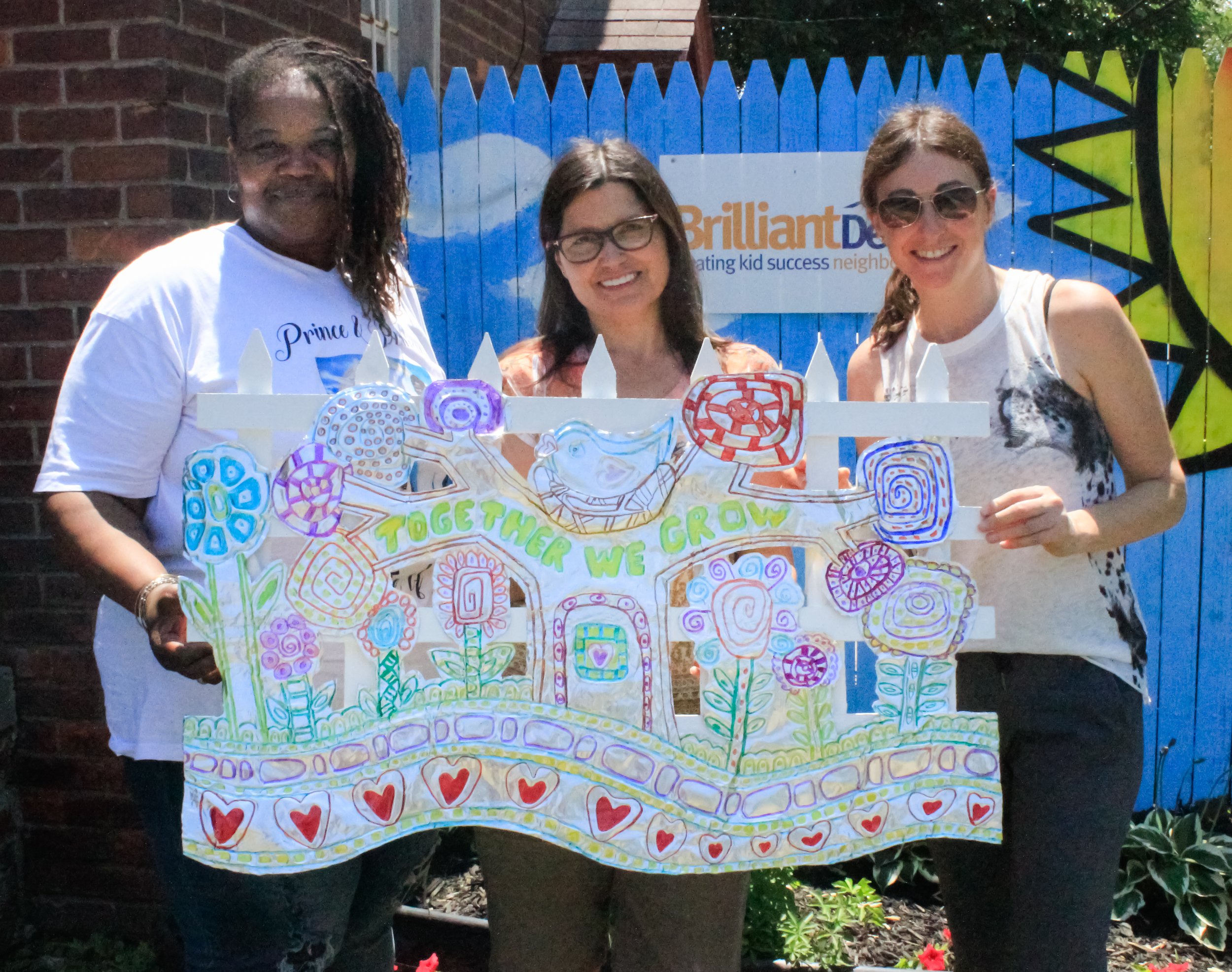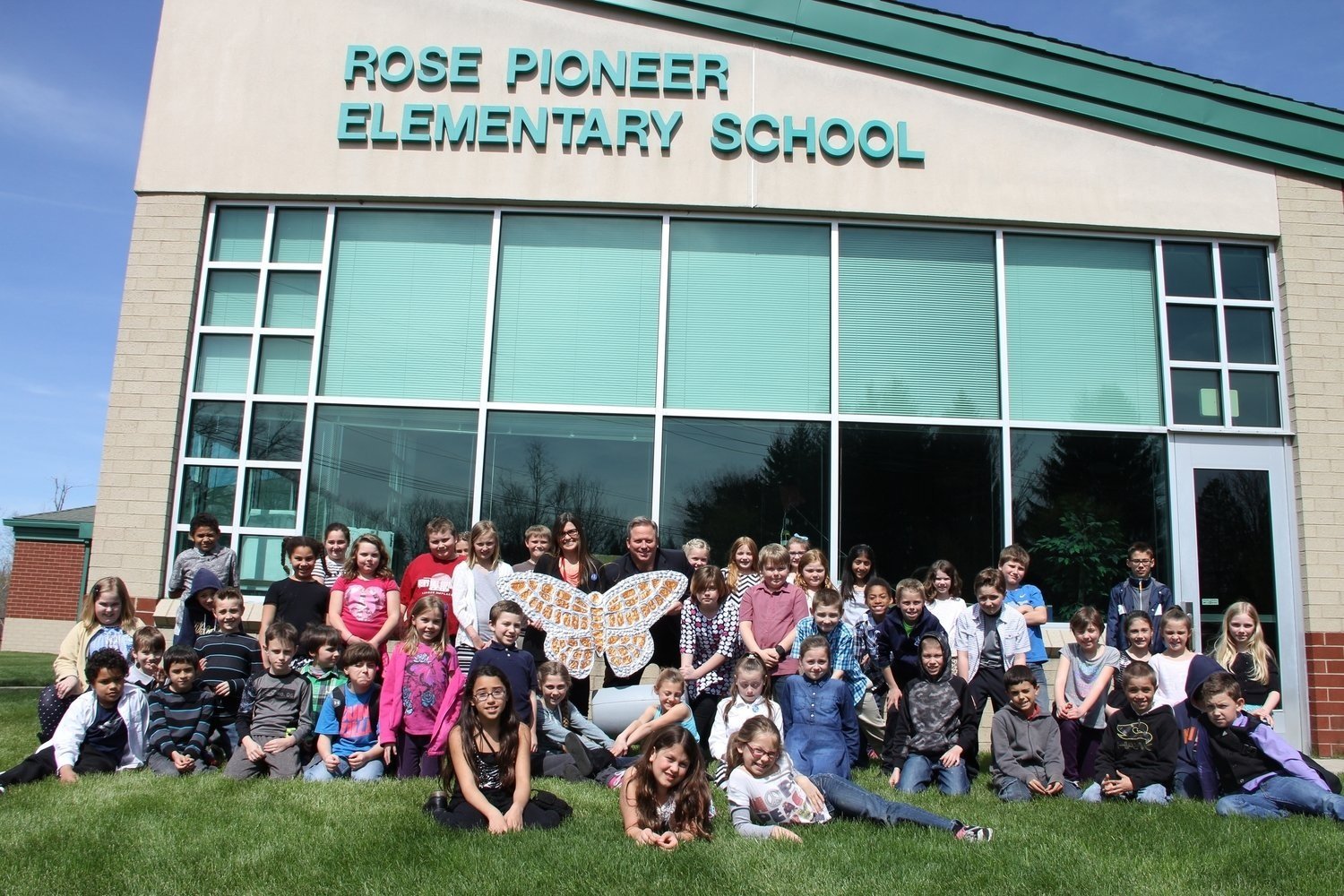Teaching Philosophy
I believe that through cultural experiences of the arts, we are able to make sense of the world and ourselves, either by producing works or viewing and interacting with them. This has been the case throughout history. Because art responds to individual and cultural needs, it provides a gateway to knowledge.
Educating through art may be approached through a combination of the following methods: Expressionist, Reconstructivist, Scientific Rationalist, and Constructivist. I do not necessarily see these as conflicting models but instead, I feel that they are individual streams that have the potential to intertwine and complement each other as a unified educational approach.
The Expressionistic approach (art for art’s sake) honors the child’s innate potential for creativity and imagination and strives to protect, nurture and foster development while respecting the child’s autonomy.
The Reconstructivist lens of art education (art is a means to an end other than art-art as a change agent) recognizes the potential for art education as being a powerful tool for historical and moral guidance, which fosters critical thinking capacities by providing a rich environment in which to exercise theoretical and analytical practices providing possibilities for social change.
Scientific rationalism (learning to reason through observation and perception) employs an inquiry-based approach to learning. This method considers both philosophical and psychological matters pertaining to art as contributing factors in cognition. Art then, is the means to both intellectual and human development.
Constructivist learning (Empowers students to construct understanding through active engagement with new info, using existing knowledge) this approach emphasizes collaboration and interaction as learners make sense of artistic concepts. Through constructivist teaching, students are encouraged to explore and inquire, fostering a deeper comprehension of artistic principles and techniques.
As an educator, I feel that all of these streams are equitably valid and offer truly meaningful educational experiences through art, leading to the intellectual, social, and cultural development of an individual.
“Art is the most profound way in which a group of people can understand their culture and other cultures. Somehow art gets at the soul of who we are as a people. It transcends race, class, and gender. It transcends sexual orientation. It transcends history. It transcends war. It, for me, is the only thing that truly is eternal. Histories get rewritten and changed. They get buried. But art, for some reason, manages to remain untainted.”
Middle School and High School Art Teacher
Teaching grades 6-12! Auburn Hills, MI.
Middle School and High School Art, Auburn Hills, MI.
Middle School and High Art, School Rochester Community Schools Virtual Campus, Rochester, MI.
Fifth Grade Agamographs Inspired by Artist Yaacov Agam
Israel’s Yaacov Agam Museum of Art Celebrates Its Opening with Park West Gallery
This assignment was initially inspired by a display in the DIA Away Truck where the viewer is asked to move to the right and left to see this coat before and after an artist added beadwork. This beaded coat was made about 1890 by a woman artist of the Oto-Nation in Oklahoma. She used the form of a European-style coat and applied Native American symbols using traditional beadwork, to create a strong message about Native American culture.
Adjunct Instructor
College for Creative Studies Teaching 2D and 3D courses, Foundations Department Detroit, MI.
College for Creative Studies Student Art Work Detroit, MI.
Art Instructor
Paint a Miracle; An Art studio for Artists with Different Abilities Rochester, MI.
Encaustic Workshop Facilitator
Paint a Miracle Encaustic Studio General Public Programming Rochester, MI.
Art Programming within the Metro Detroit Area
Pistons Public Art Programming; providing collaborative art making and “Take and Make” projects at Pingree Park, Detroit, MI.
Art Programming within the Metro Detroit Area
Portable Public Mural through Anton Art Center providing Art Programming for Mt Clemens Public Schools Middle School Enrichment Camp, Mt. Clemens, MI.
Art Mentor
Artist mentor for the Mint Artist Guild, Detroit, MI.
Visiting Artist
Ruth Ellis Center; creating opportunities with LGBTQ+ young people to build their vision for a positive future. Detroit area social services agency, Detroit, MI.
Visiting Artist
The Older Persons’ Commission Providing Lifelong Learning to Senior Citizens, Rochester, MI.
Visiting Artist
University Liggett School, Grosse Pointe Woods, MI.
Kindergarten Ceramic Owls in the Making.
Project Based Community Art
Fourth Grade Rochester Community Schools Foil Tooling Relief Sculpture
Collaboration for Brilliant Detroit Osborne House, Detroit, MI.
Project Based Community Art
Fourth Grade Holly Area Schools Collaboration for Children’s Hospital, Troy, MI.
Project Based Community Art
Seventh Graders Created Adoptable Animal Portraits in the style of the early 20th-century Fauvism art movement for Best Buddy Pet Rescue, Lake Orion, MI.
Project Based Community Art
Middle School Students were tasked with embodying the essence of a professional artist as they were introduced to the genuine necessity of a Call for Art. In response, we conceived the Good Vibes series with the sole purpose of uplifting the spirits of pediatric patients and their families on the Oncology floor at Trinity Health-Oakland Pediatrics Office Building. Moreover, three additional series of artwork were curated: Rose Window/Mandalas, also destined for the Oncology floor, along with black and white handouts for patients to color while undergoing treatments, and Animal Mosaics and Expansion of the Square Notan designs, which were designated for display on the Ophthalmology floor. Some examples are shown below.
Project Based Community Art
My talented Middle School art students were given a remarkable opportunity to engage in a meaningful educational experience focused on Real Needs, Real People, and Real Work. This initiative started when Trinity Health-Oakland contacted our Middle School Art department, requesting student artwork for permanent display in their new Pediatric Office Building. Hospital administrators and I collaborated closely to help students bring this project to fruition. In response, our students created a diverse array of artwork that now beautifies the walls of the pediatric Oncology and Ophthalmology offices at Trinity Health. Actual installation shown below.
Art Workshop Presenter
Offering a Sankalpa Painting experience at a yoga retreat held by Bethany Perry with Whole Life Healing Centers
Educating Educators
Mentoring Art Educators for National Art Education Association
A Painting Workshop presenting Tunisian Collaborative Painting at the NAEA
Presentations
Sample Lessons from Elementary, Middle, and High School.
For more lessons visit In the Art Room.
Elementary Printmaking Lesson
Monoprint Printmaking
Students learned how to make monoprints using miscellaneous tools for mark marking and the table as a printing plate. Monoprinting is a process whereby only one print is pulled from the printing plate. This can be modified for any grade level or ability.
Grade: May be modified for all Grades
Time: One 50 min. class
Materials:Tempera paint (squirt bottles), mark making tools (purchased or found), table (used as the printmaking plate), masking tape (to section off printing surface), large format printmaking paper of finger painting paper.
Learning Objectives:
Experience a variety of mark making techniques.
Learning the concept of monoprint-monotype (one print from a plate).
Learn about reverse imagery through the experience of printmaking.
Fourth/Fifth Grade Printmaking on the table with tempera paint and mark making tools.
Middle School Weaving Lesson
Navajo Inspired Weaving
Sixth graders were introduced to both traditional and contemporary Navajo weaving and weavers. We explored both the similarities between the contemporary and traditional styles as well as how they have changed within the Navajo culture.
The students created these bracelets with color, pattern, and texture on a cardboard loom with yarn. Considerations included color scheme, symmetry, symbolism and personal identity.
Please visit my Lesson Introduction on Prezi
Sixth grade wristband weaving projects.
High School Printmaking Lesson
Inspired by Tunisian Collaborative Painting
Exploring Woodcut printmaking Group Project (and individual option) Grade Level: 9-12
The Big Idea:
Students will work together in selected groups of four to create a large format wood cut print incorporating the Tunisian Collaborative Painting technique. Tunisian Collaborative Painting (TCP) requires groups of artists to apply a set of rules that result in a cohesive painting with the appearance of a sole artistic presence.
The painters work in silence for an allotted period, and there is no preconceived subject The concept behind Tunisian Collaborative Painting is simple, yet profound. It celebrates the oneness of all human beings and the wonder of the creative process.
As a group of four they will decide how they will approach the work in regards to design, technique, process and operations. Each group will complete a 4 x 4 foot wood cut carved out of plywood. Students will pull four canvas prints (one for each student). Student may choose to make individual prints on 8 x 8 “ abstracted area of the work on canvas or various printmaking papers.
This lesson was modified from the Tunisian Collaborative Painting method and could be presented as such.
Time: Ten 55-minute classes.
Enduring Understandings:
Artists can experiment by creating a conceptual work of art through collaborative interaction. Technical Skills: wood carving, wood burning, Inking and pulling prints
NVA Standards: (Those that Apply to Enduring Understandings & Technical Skills)
VA: Cr1.1.8a Document early stages of the creative process visually and/or verbally in traditional or new media.
Collaboratively develop a proposal for an installation, artwork, or space design that transforms the perception and experience of a particular place.
Resources:
Audio clip description of Tunisian Collaborative Painting:
http://www.pri.org/stories/2011-11-21/slideshow-collaborative-painting-north-africa
Printmaking for Beginners (Printmaking Handbooks) by: Jane Stobart
youtube clip: MIA Printmaking Processes: Relief
http://www.youtube.com/watch?v=O0skLwaFpn0
Materials Needed: 4 x4 ‘ cuts of Plywood, wood burning tools, cabinet maker carving tool, canvas on the roll, a variety of block printing ink and paper, a variety of pressing tools (be resourceful).
Daily Instruction:
Day 1: Introduce Tunisian Collaborative Painting (background and rules)
-Tunisian artist Hechmi Ghachem created Tunisian Collaborative Painting in 1988 during the rule of President Zine el-Abidine Ben Ali. Ghachem set out to reclaim freedom of expression for Tunisian artists through collaborative paintings (see listed resources for more information)
-Tunisian Collaborative Painting adheres to the following rules:
• The participation of at least three artists with a maximum of seven.
• There is no preconceived subject.
• One artist starts the painting.
• Anyone can paint at any time and anyone can paint over anyone else’s work.
• One of the artists is appointed arbiter to settle any disputes;
• If an artist thinks the painting is finished he raises his hand and the arbiter takes a vote; only a majority of the artists can declare a painting finished.
• A painting can take a maximum of three hours.
• The painting is created in silence.
-After introducing the rules for Tunisian Collaborative painting discuss have a class discussion on how these rules can be applied to this relief printmaking project
-Have students break into working groups of four or five
-Have students designate an arbiter and someone else to begin the work
-Students will have a total of nine days to complete the collaborative piece
Day 2: Students begin mark making on the 4 x 4’ plywood
-The appointed student begins the work
-Students join in the creative process as they see fit
-Circulate the room to observe process
-Have students continue to keep with unspoken collaborative dialog in order to carry over until the next working day
-Students will reflect on their experience and record it for a final reflection paragraph to be used as the formative assessment
Day 3: Have a Class Discussion Reiterating the Rules
-Students continue their collaborative working process
-Circulate the room to mark progress of students and ensure that the rules are in being incorporated
-Have student reflect and record experience of the working process
Day 4: Continue Mark Making if Necessary Begin Printing Process
-Groups that have decided that they are finished may begin the printing process
-The same rules will apply to the printing process as in the marking process
-Students who are printing will use resourceful methods and tools in pressing the canvas to the plywood to make the print (brayer, rolling pin, rolling body, stepping, rubbing…)
-Have student reflect and record experience of the working process
Day 5 through Day 8: Continue Mark Making and Printing
-Students will continue the engraving, and wood burning mark making if they have not concluded
-Students who are finished printing the large canvas may continue printing smaller versions of selected areas of the panel. They may use 8 x 8” canvas sections or paper
-Circulate the room to observe progress of students and ensure the process is being adhered to
-Have student reflect and record experience of the working process
Day 9: Printing
-All groups must be engaged the printing production process of the assignment at this point
-Circulate the room to see that all groups are on task
Day 10: Final Printing Day
-This is the final day to be printing the collaborative or individual prints
-Have student reflect and record experience of the working process
-Allow time for students to write and submit their reflective summery of the assignments to be turned in as a formative assessment
Evaluations: Formative
Upon completion of the assignment students will submit a final paragraph synthesizing their reflective experience of this working process.
Summative
Students will grade themselves using a rubric and answer questions about the art process and turn them in along with their final project.
Painting from a modification of this lesson plan. Courtesy of B. Brown.


